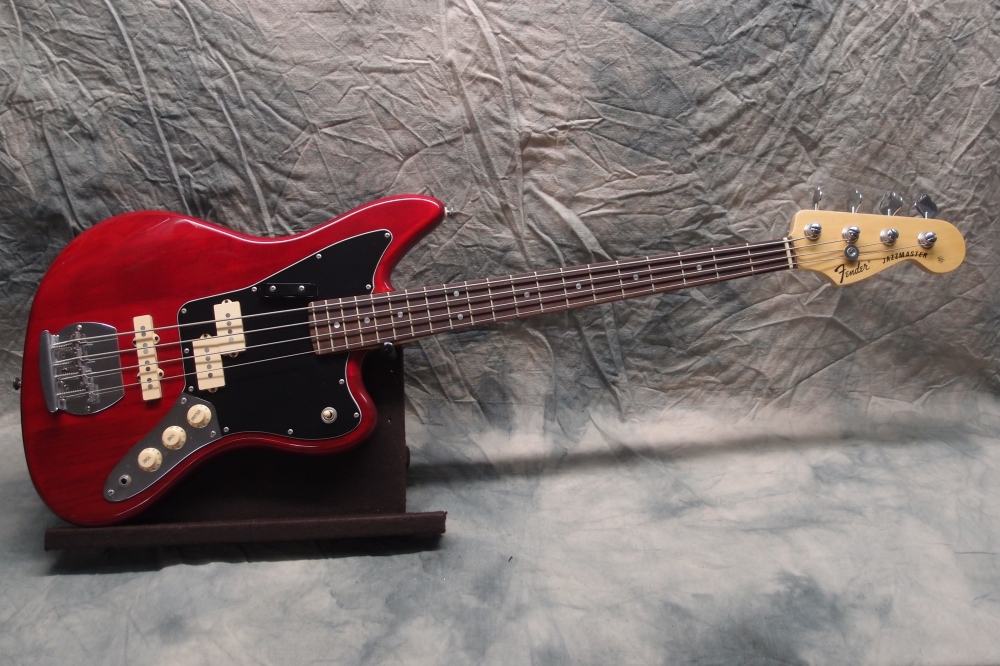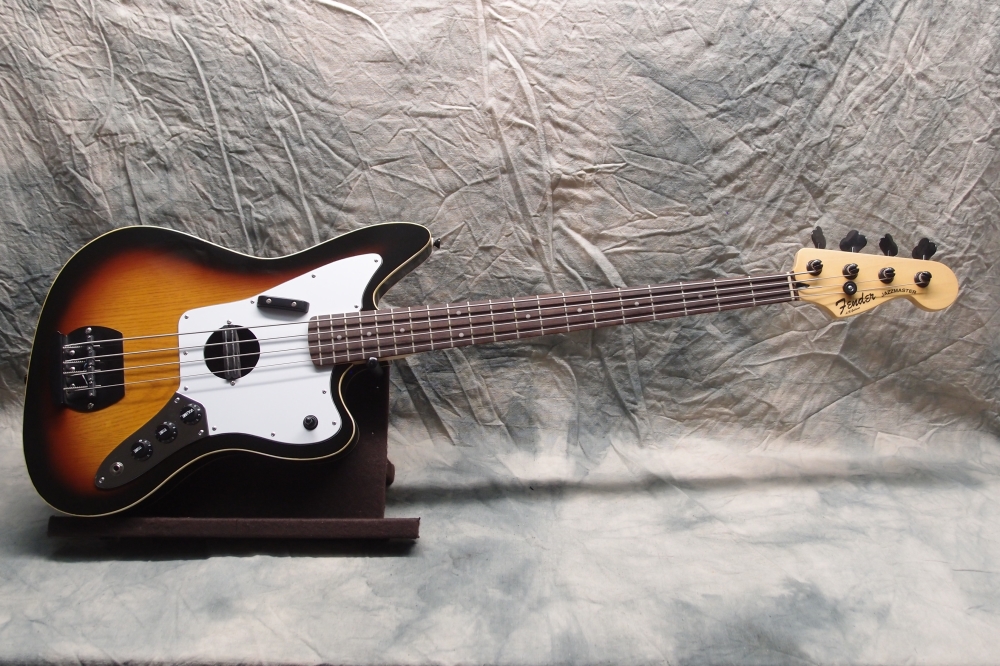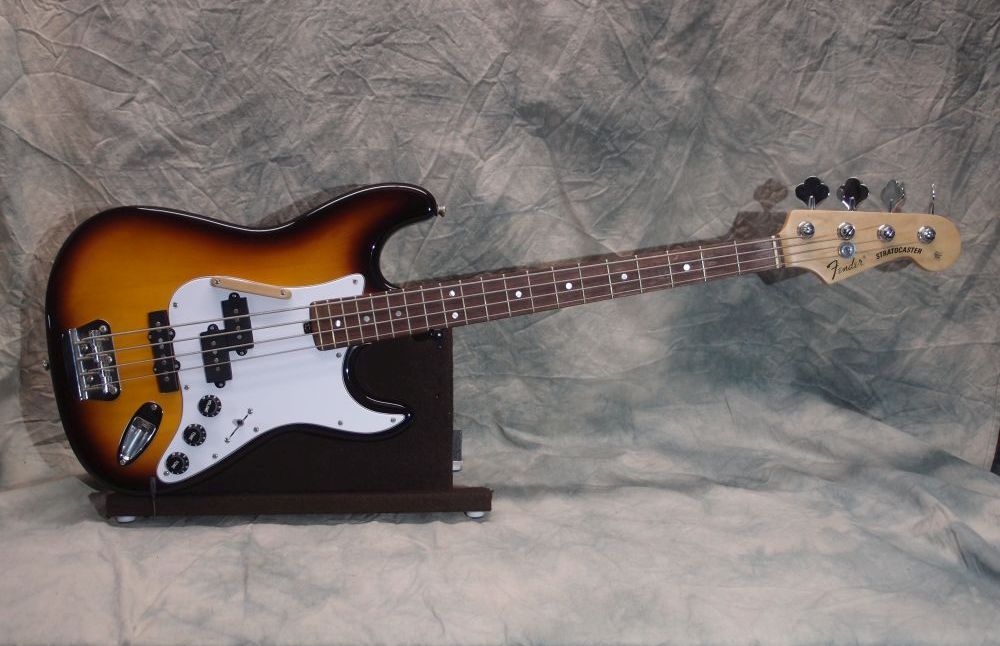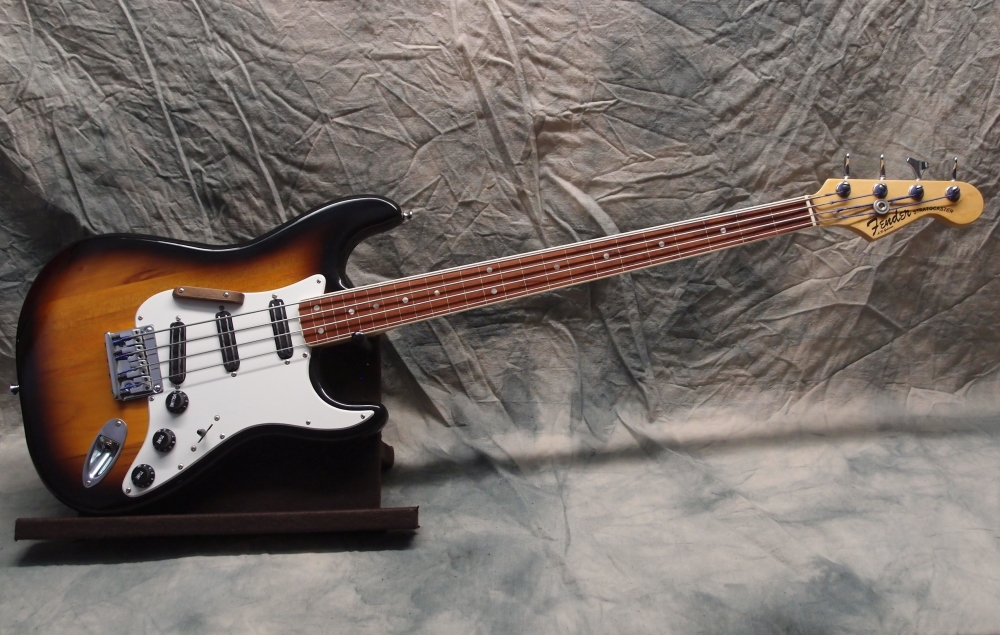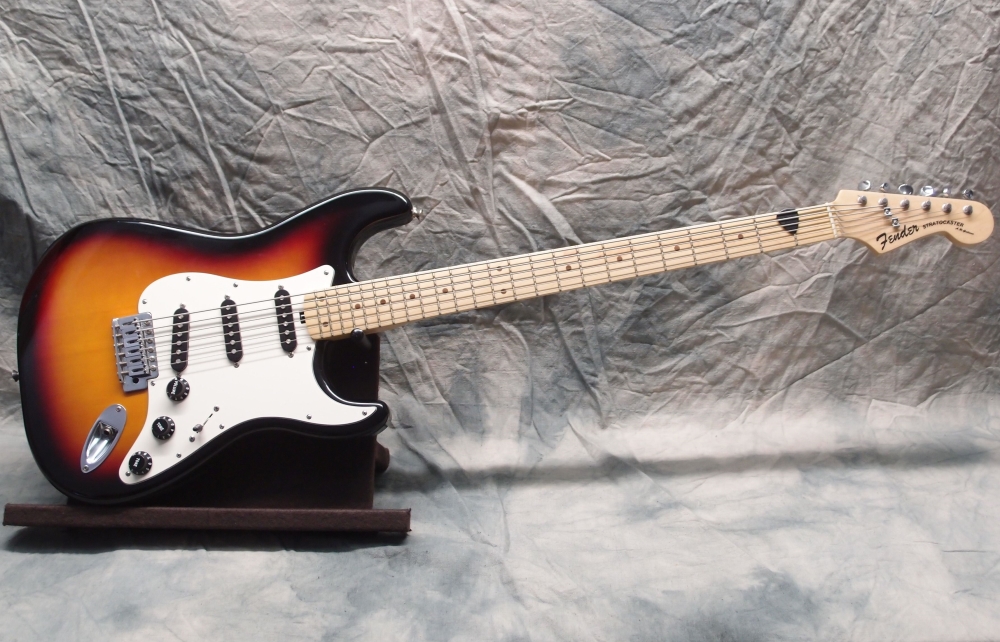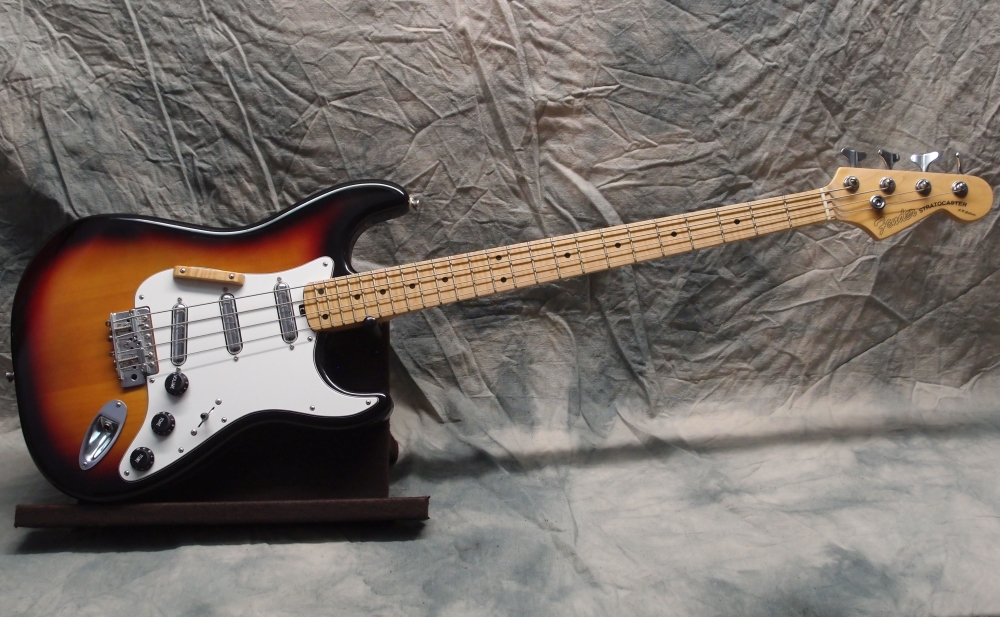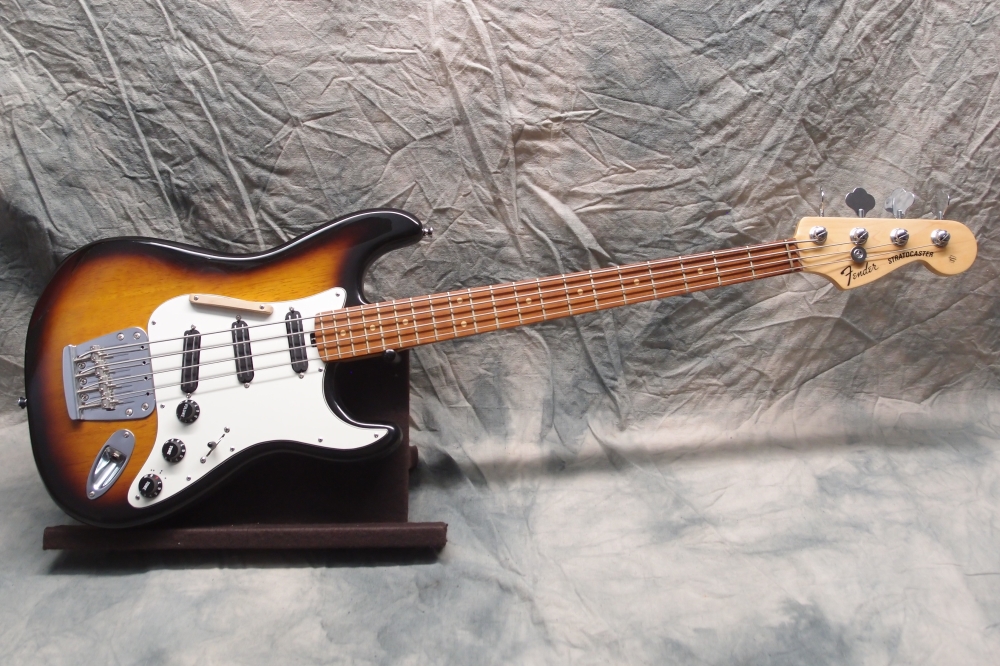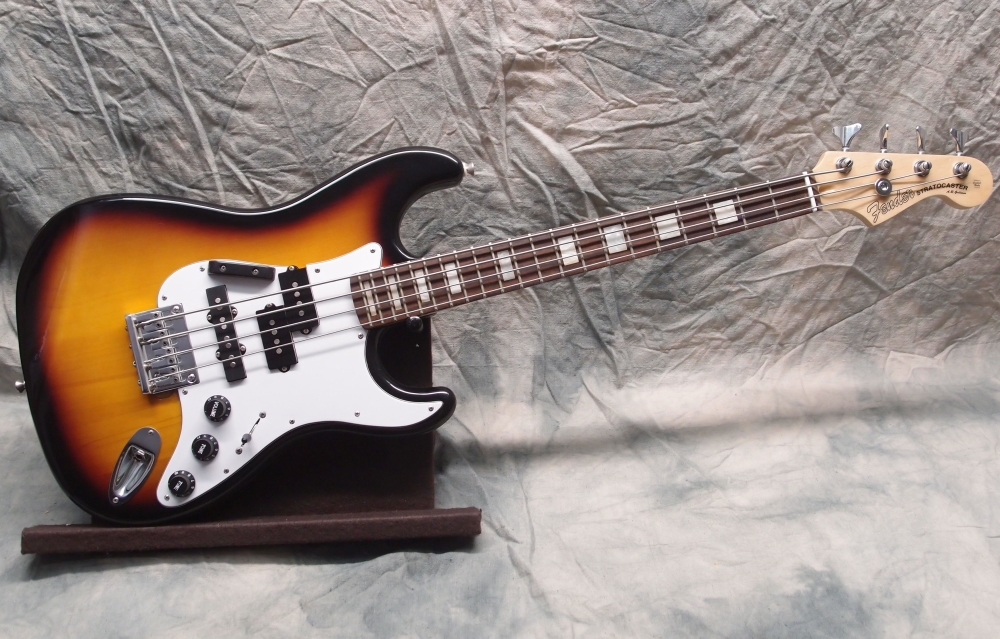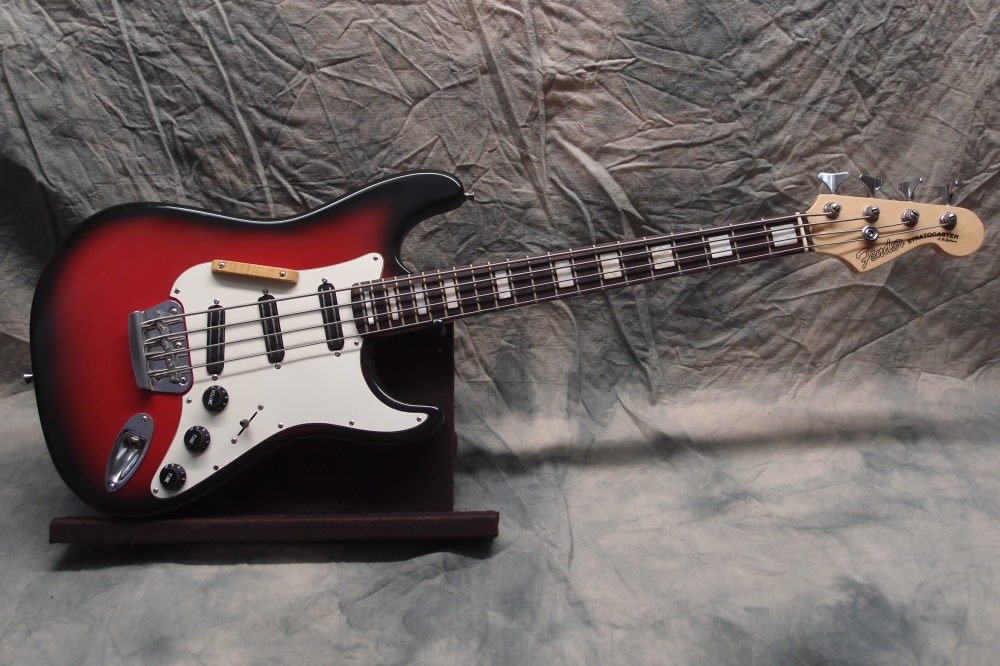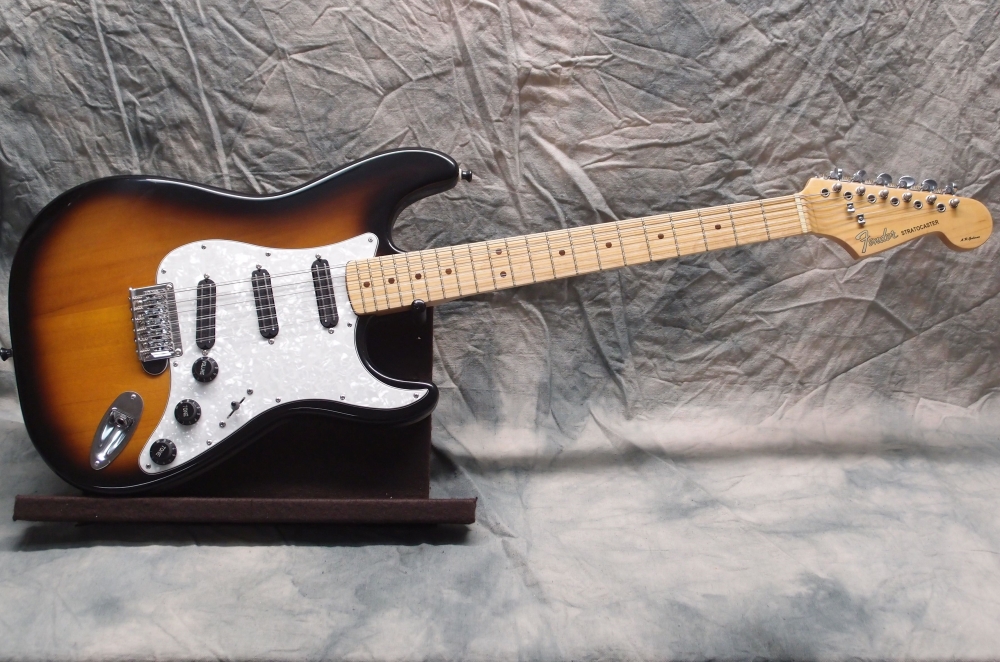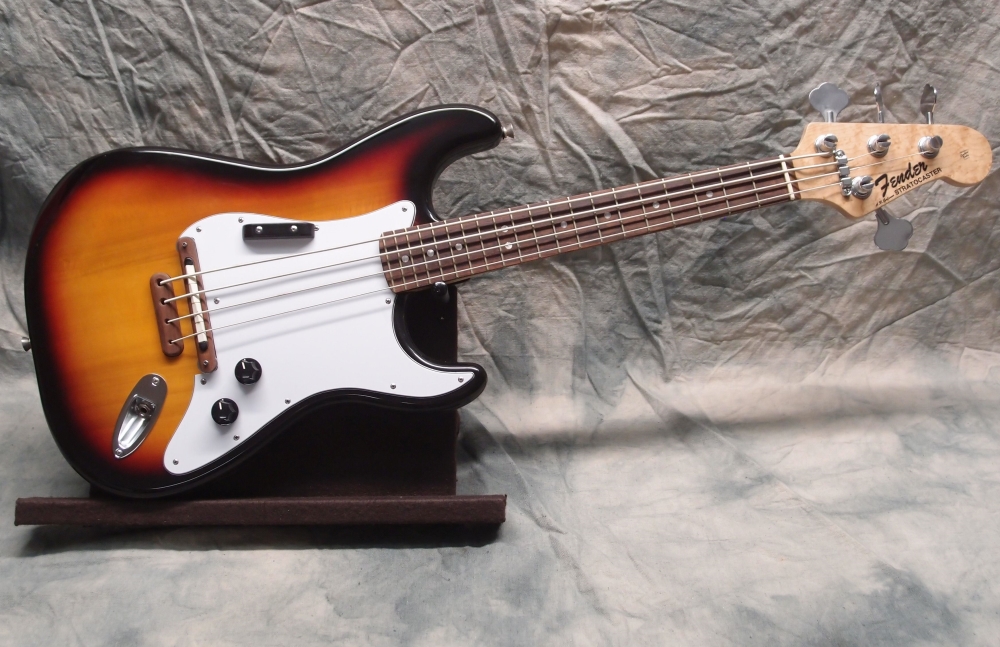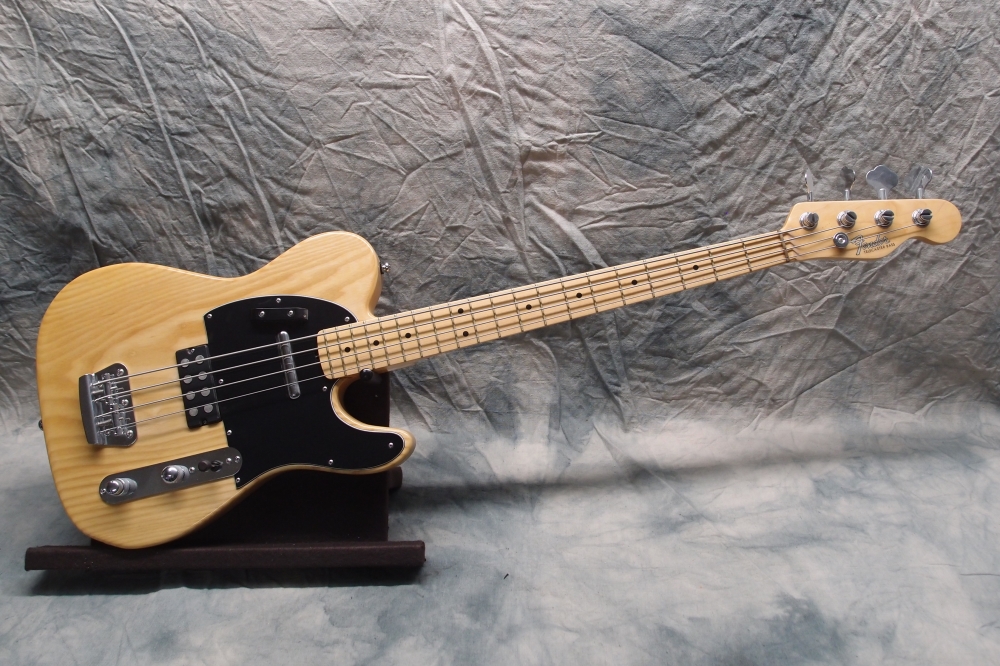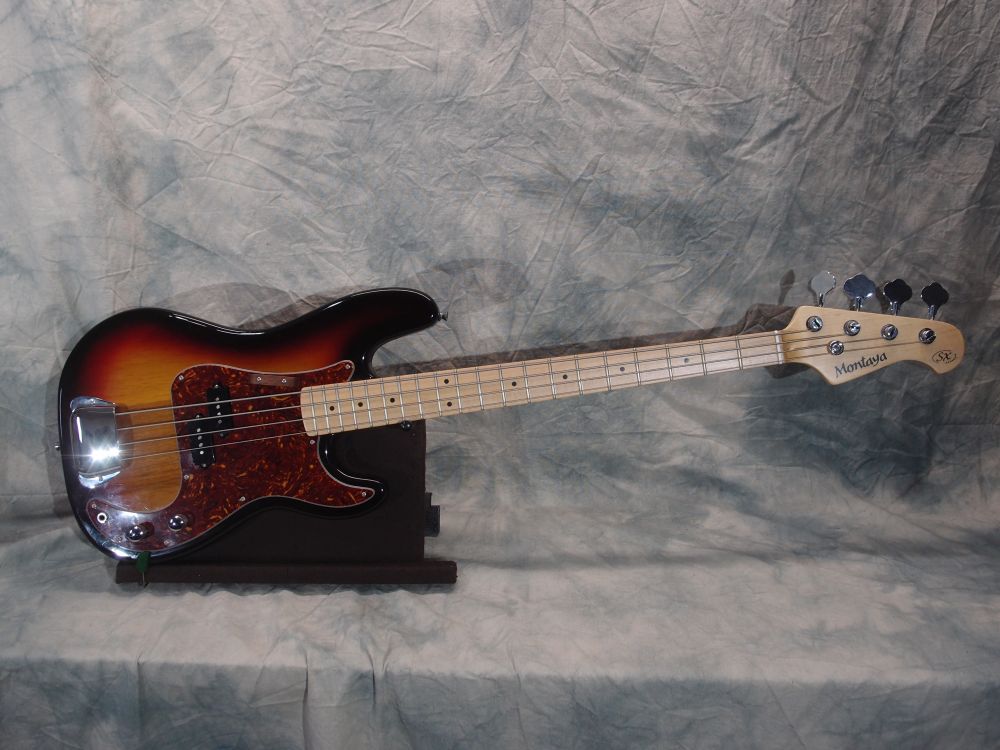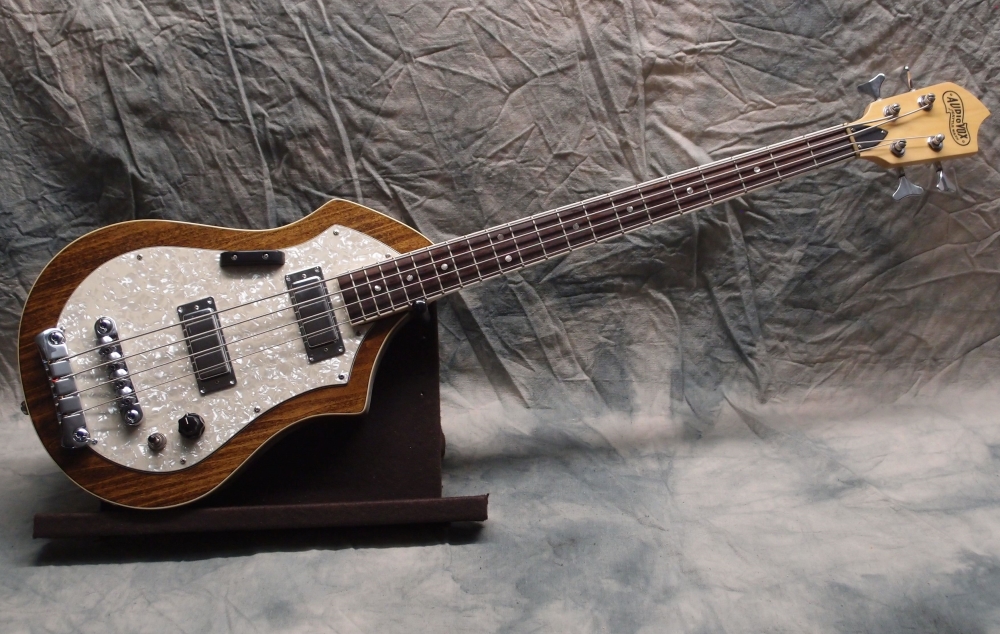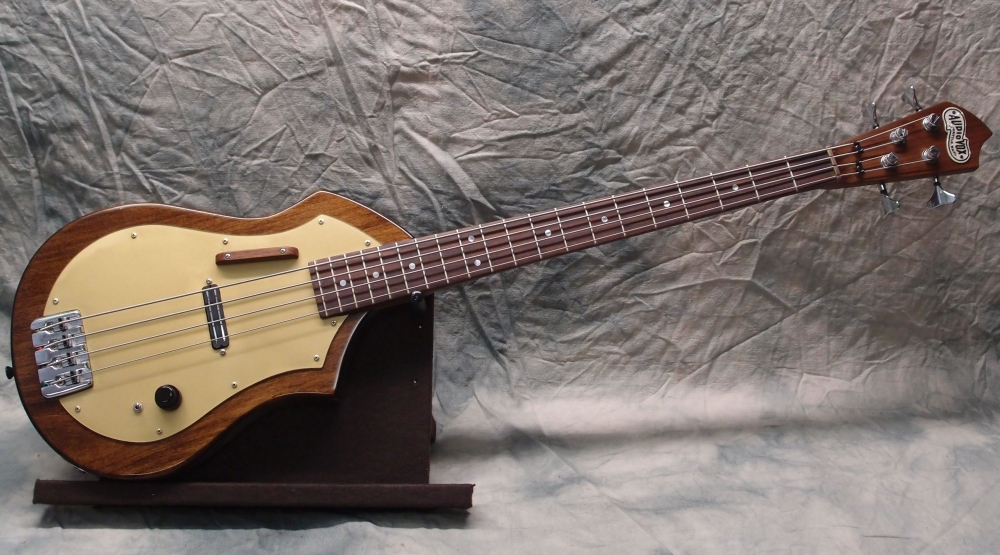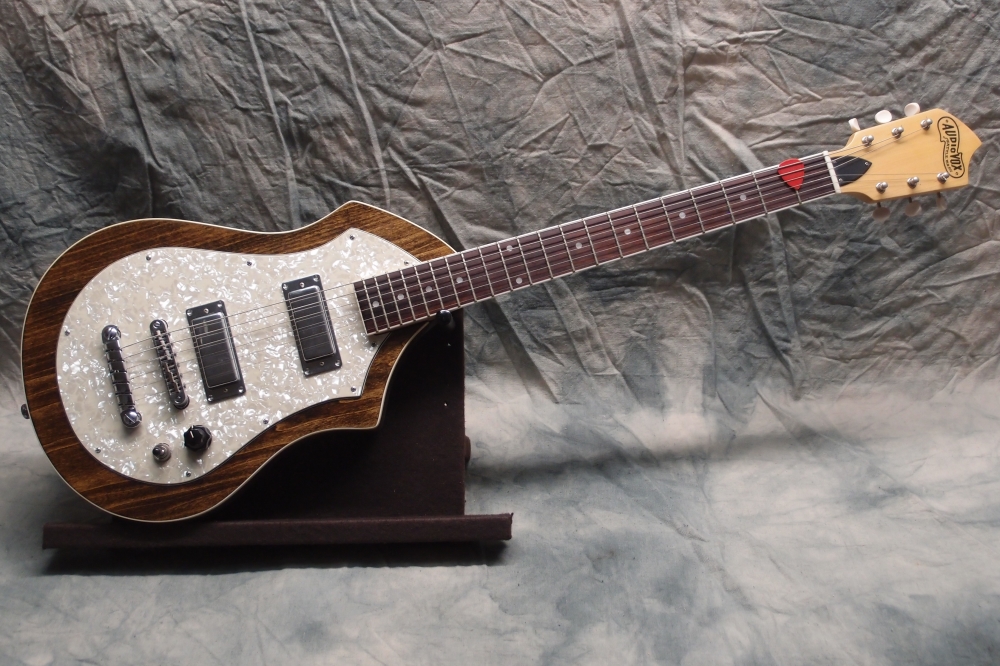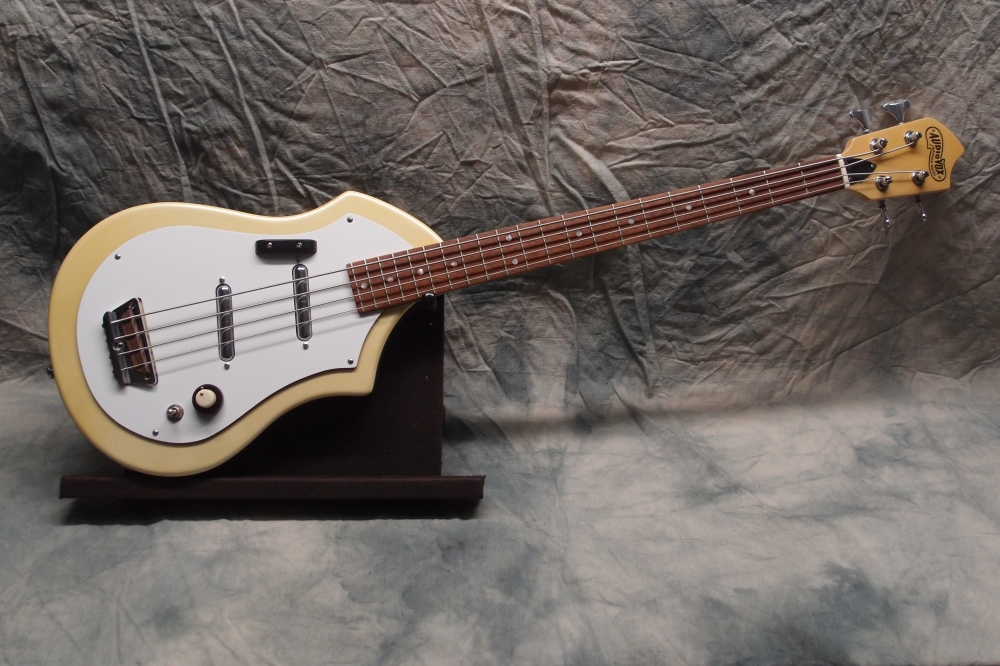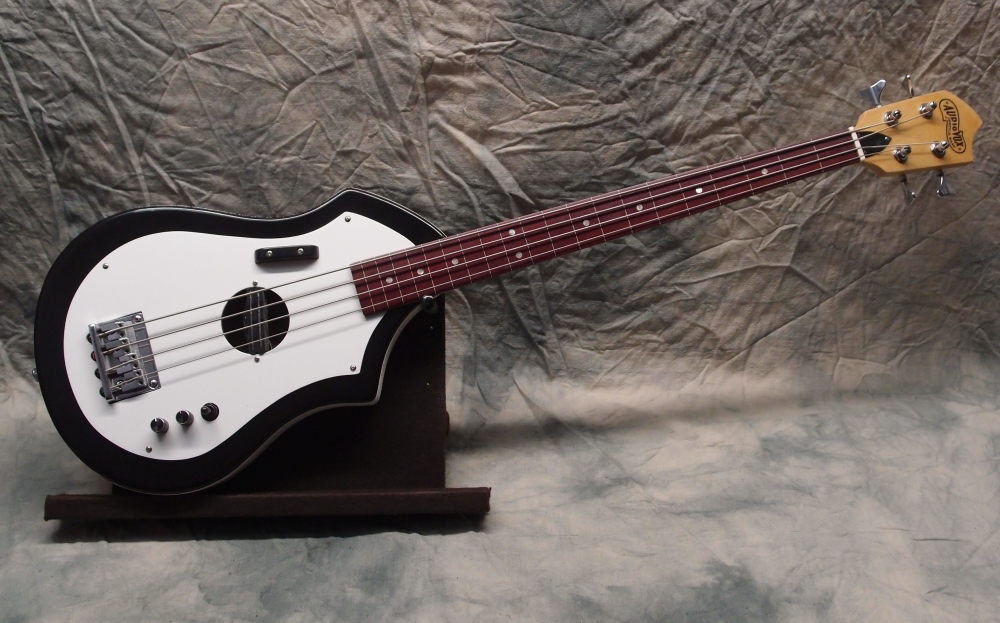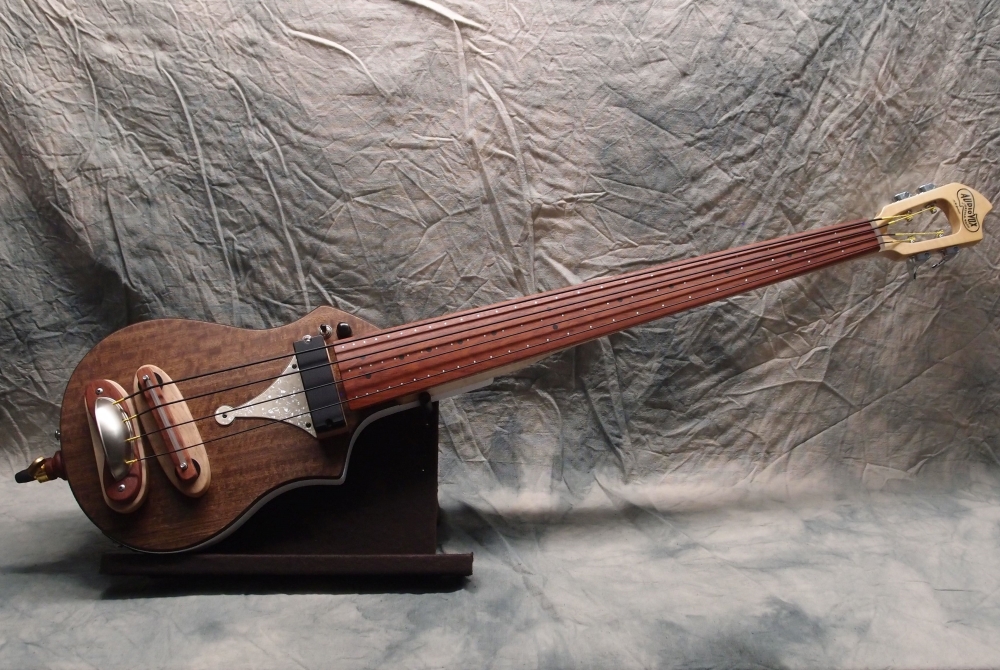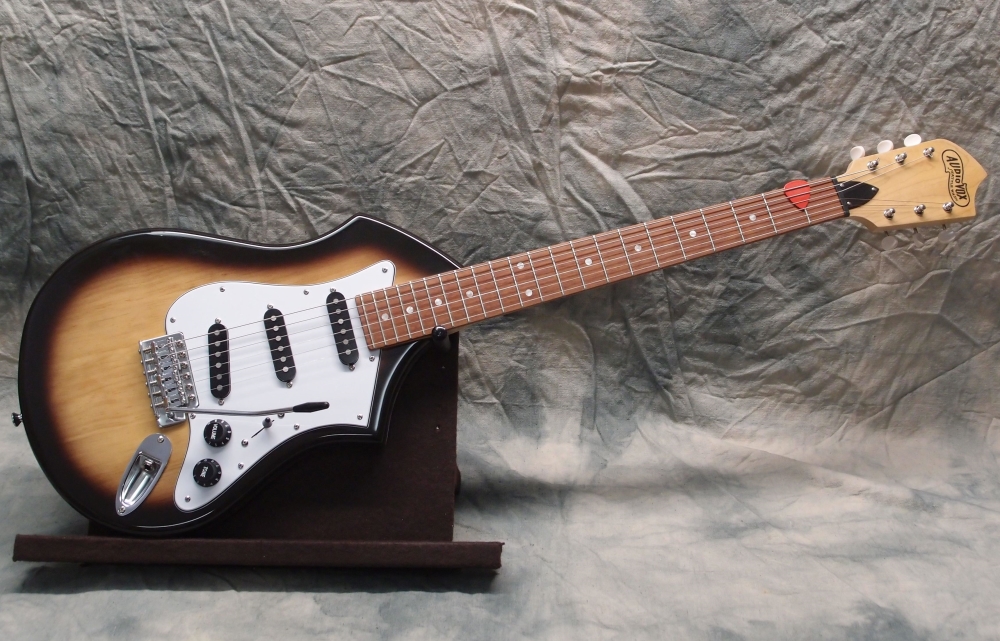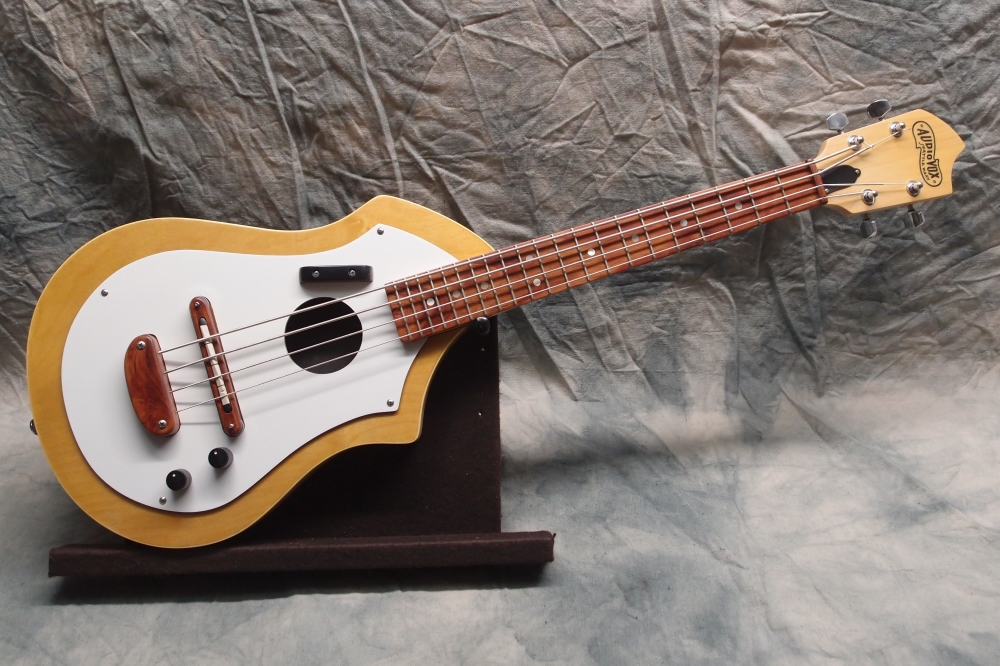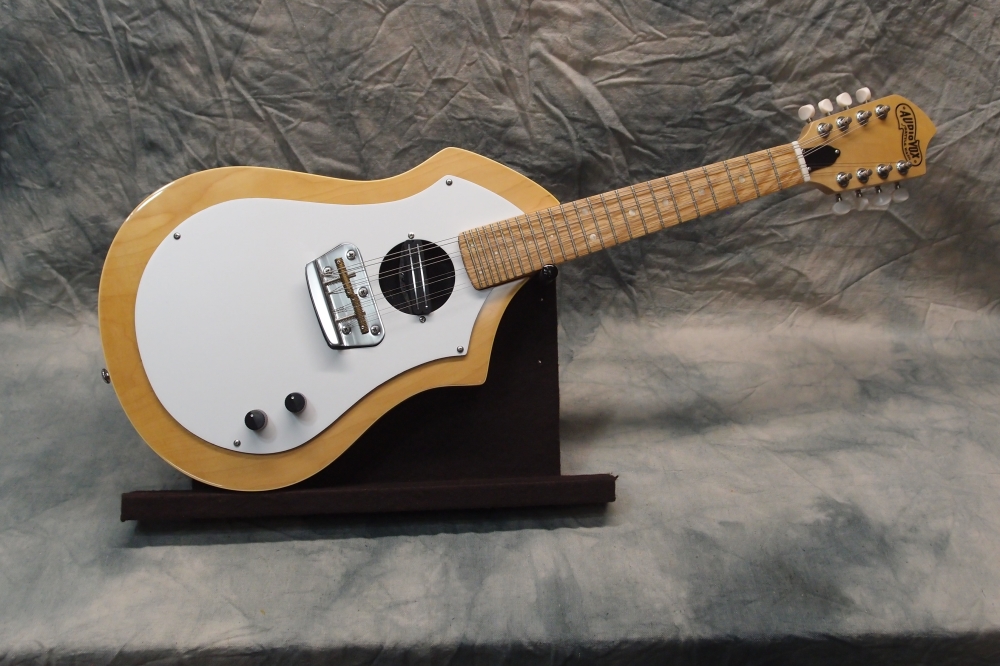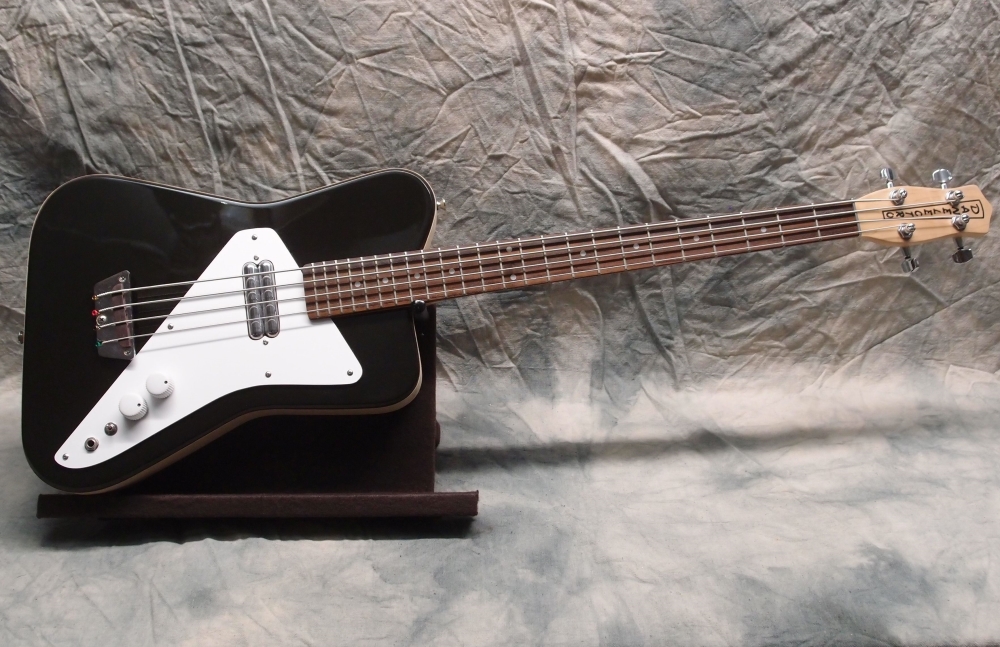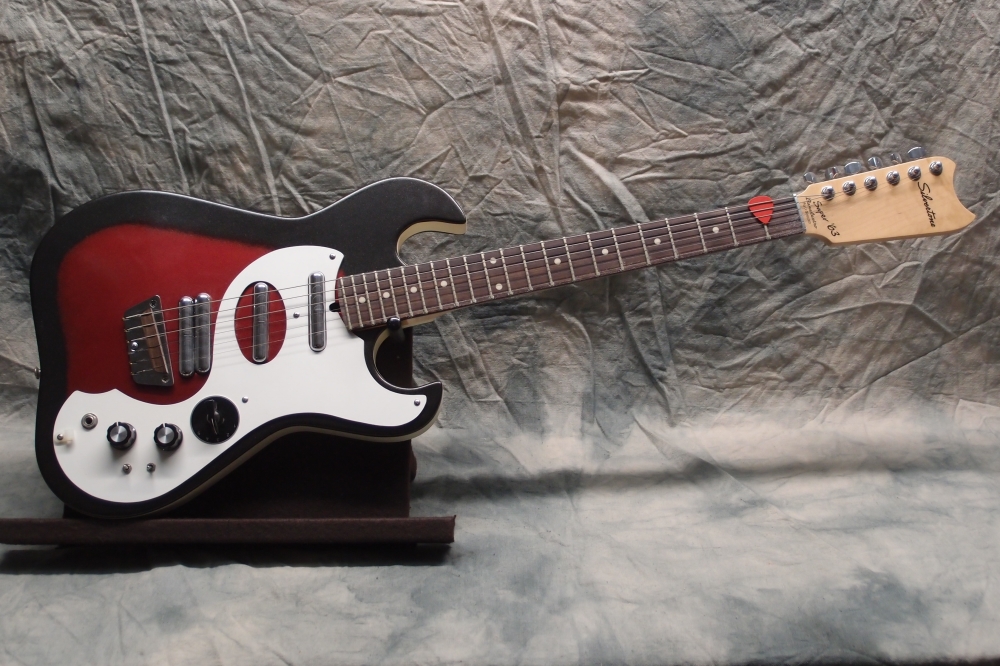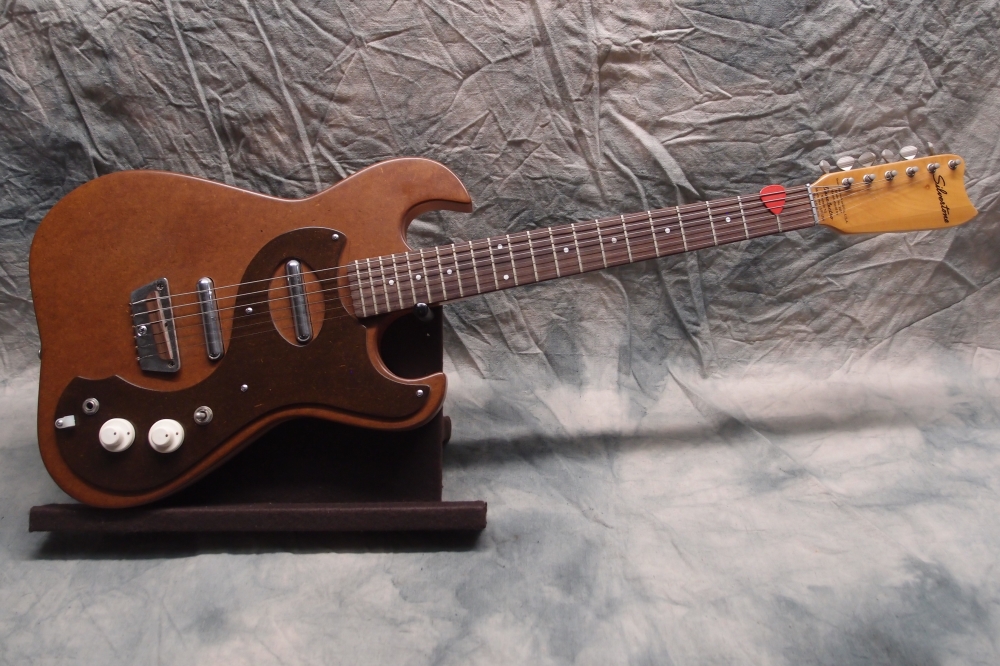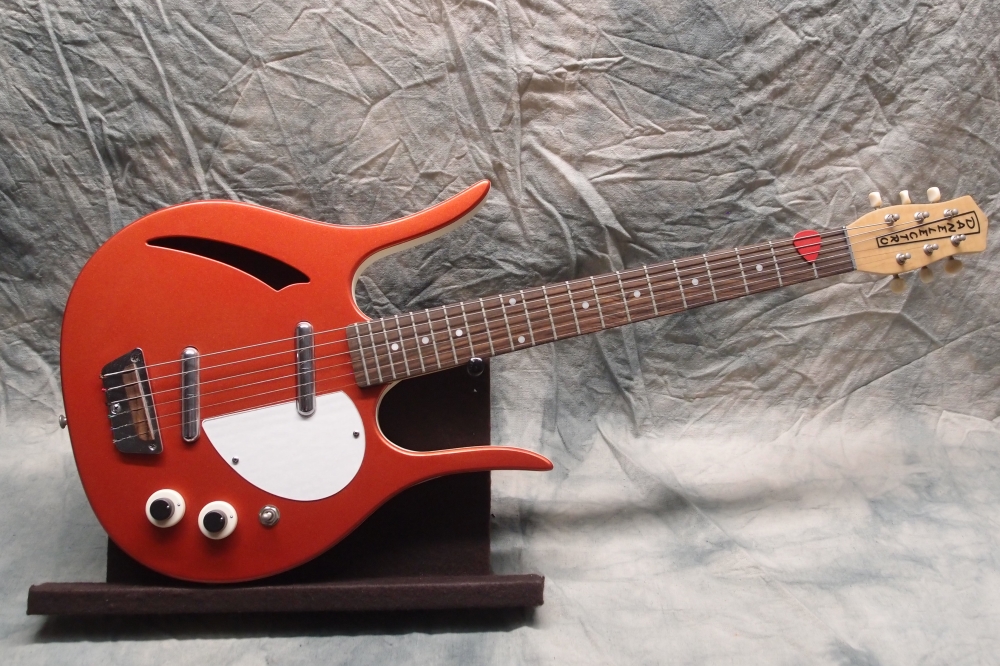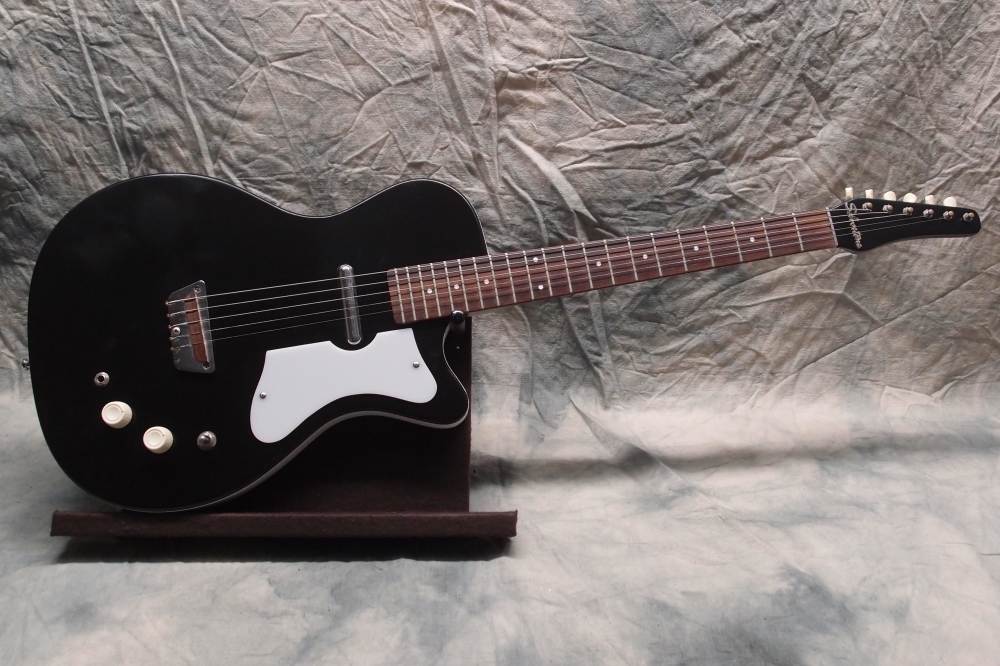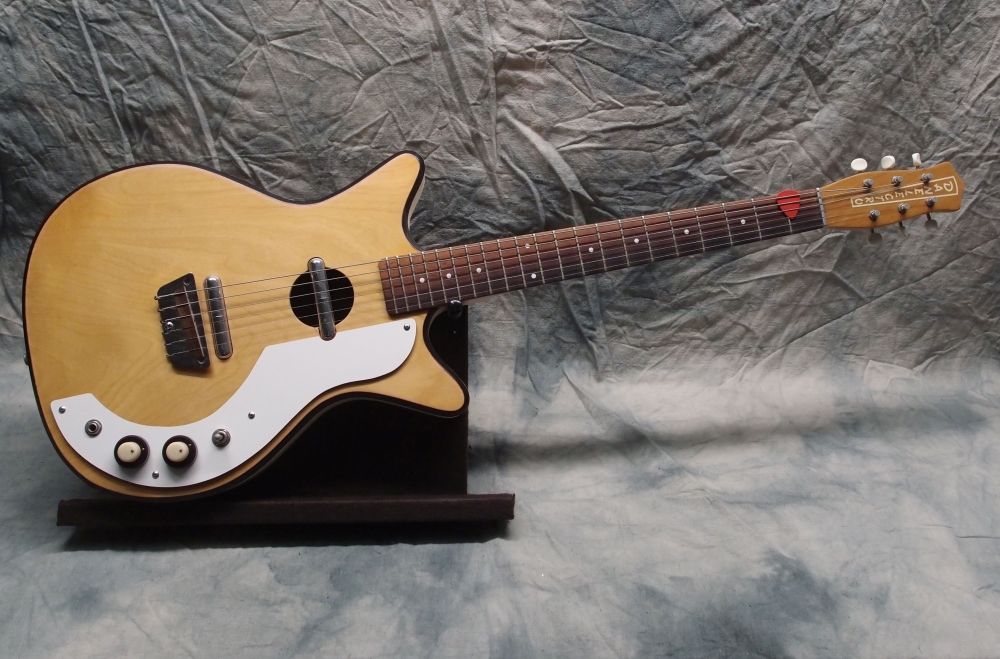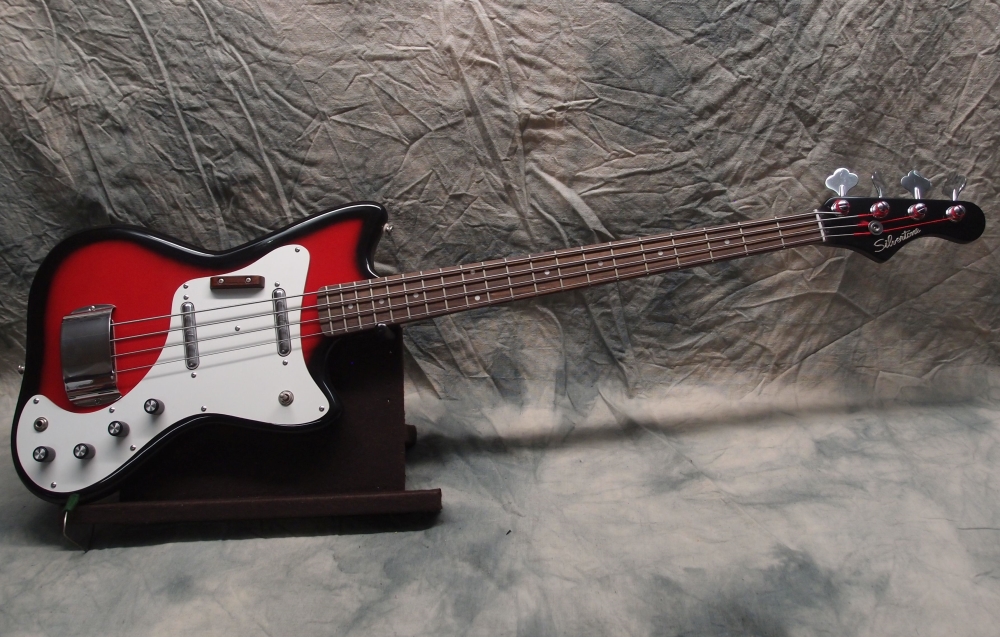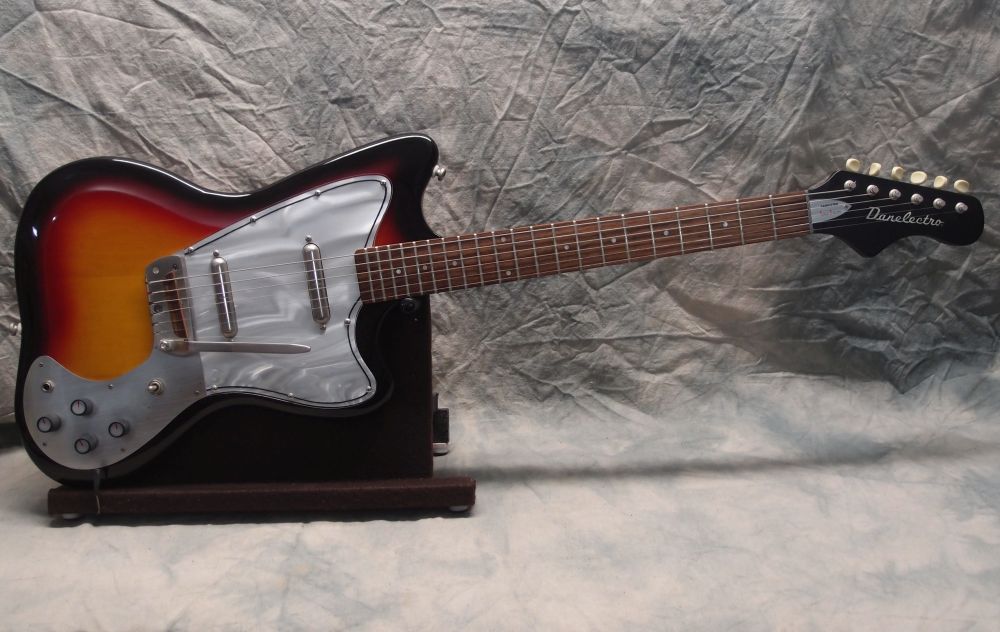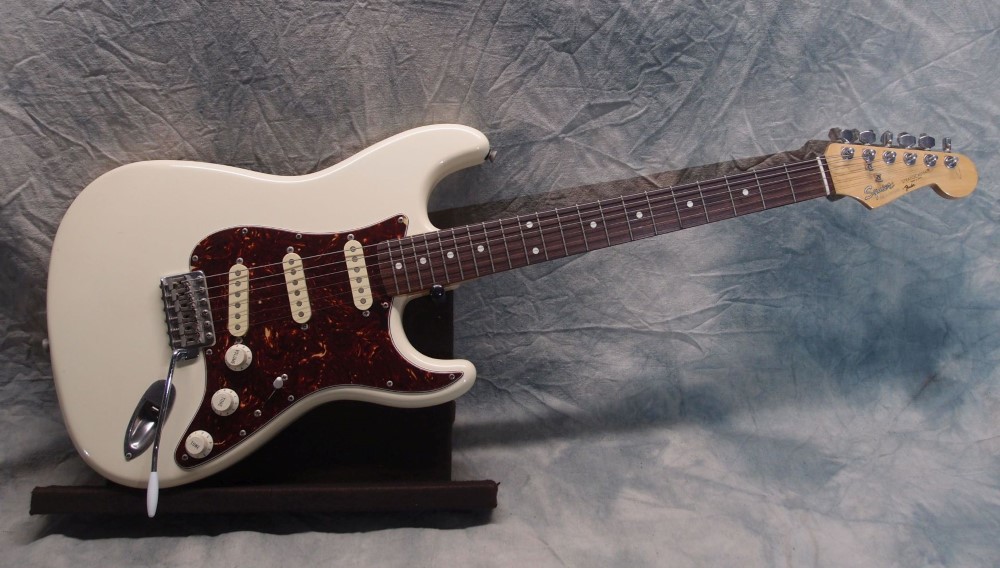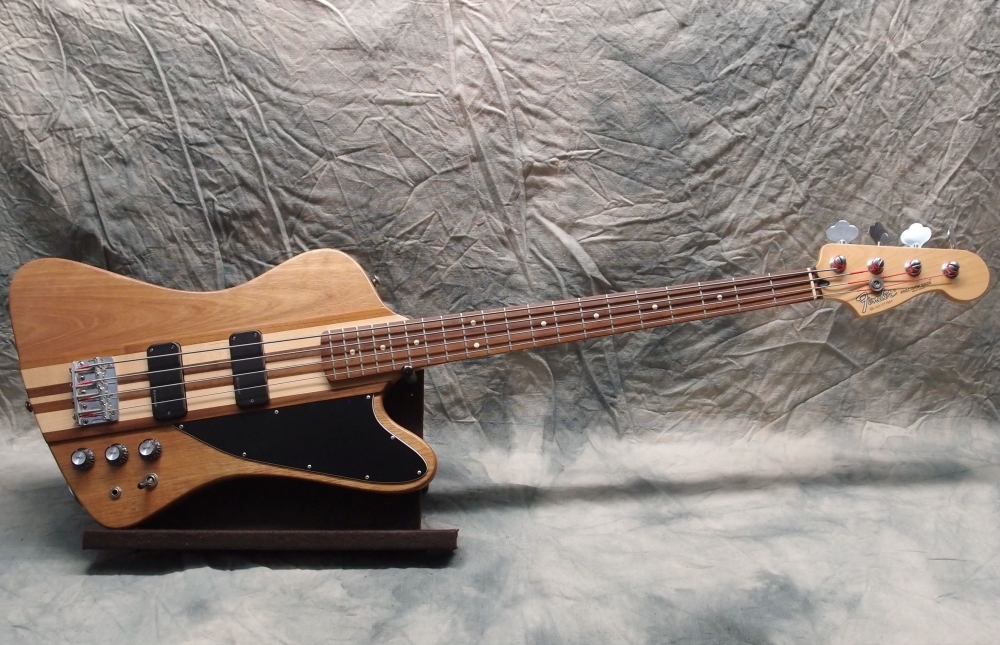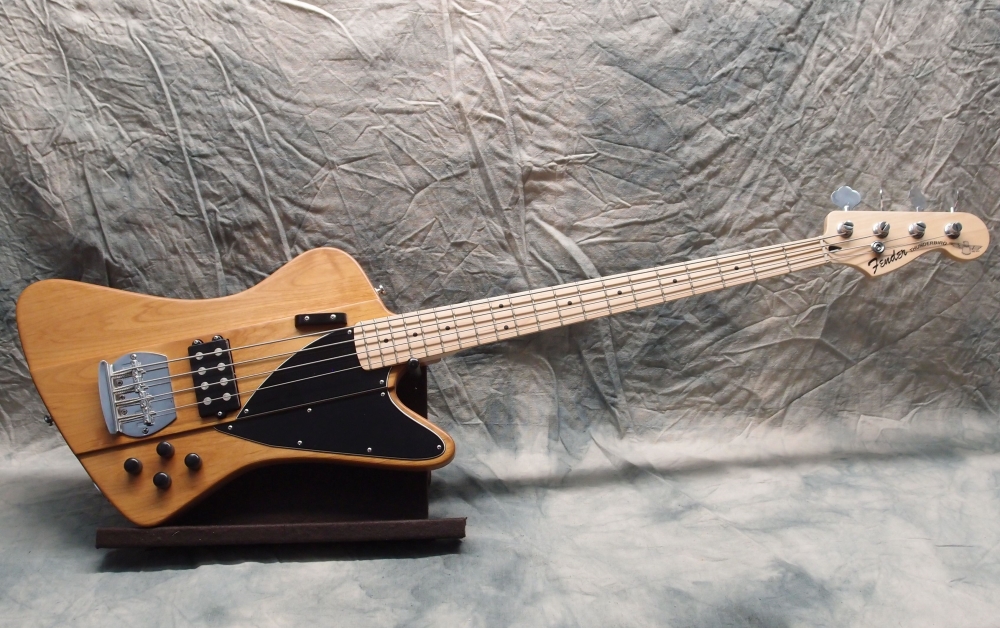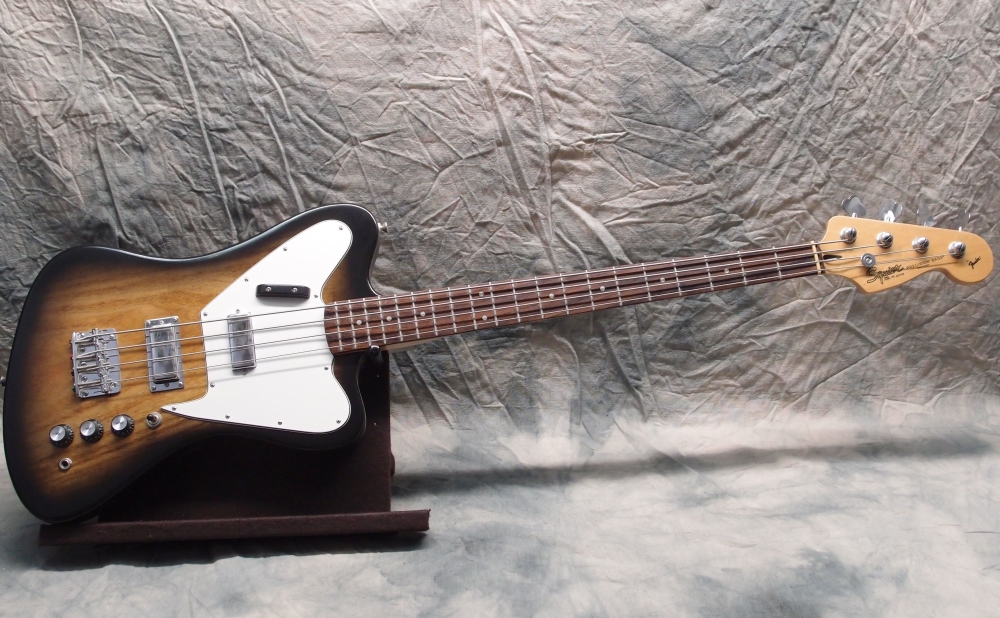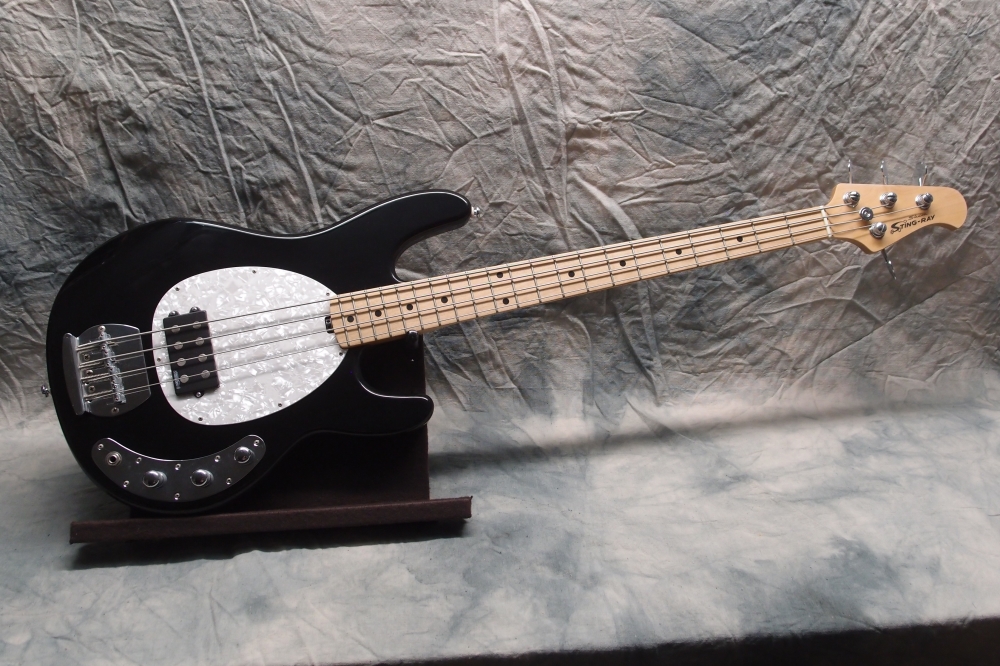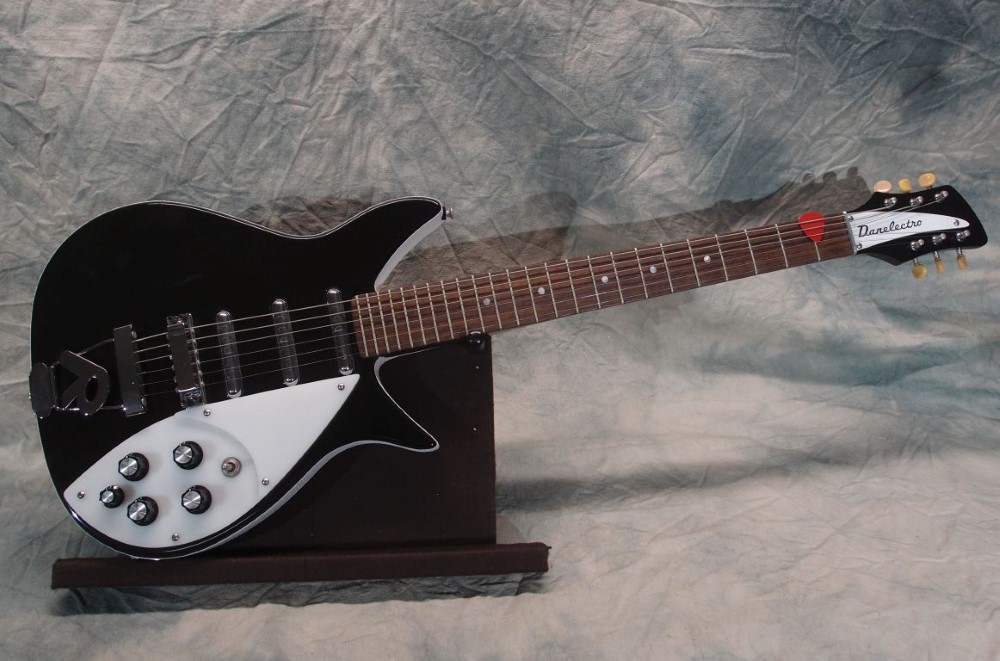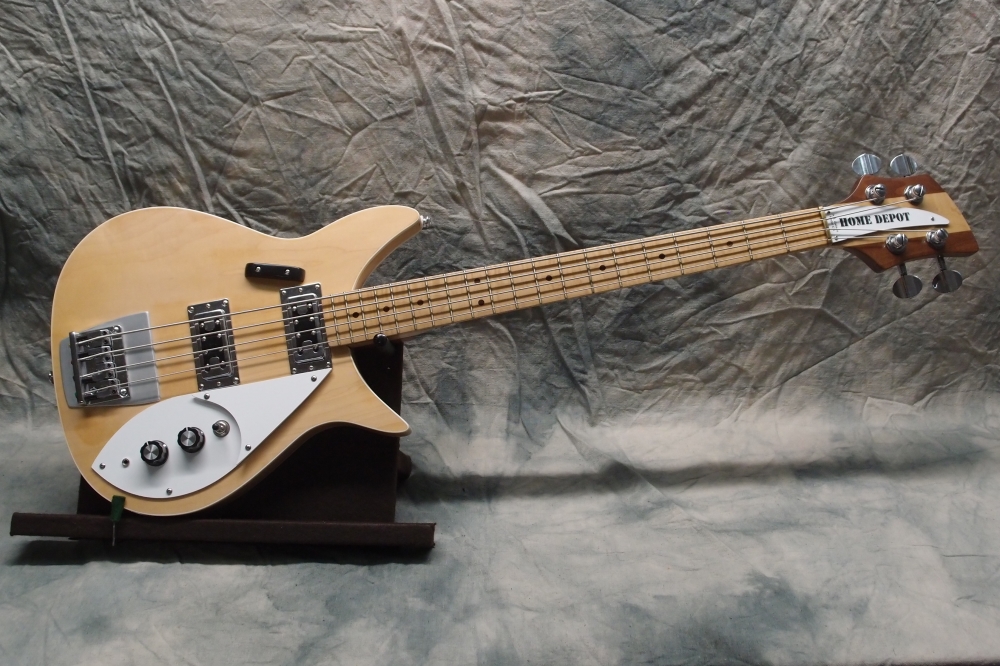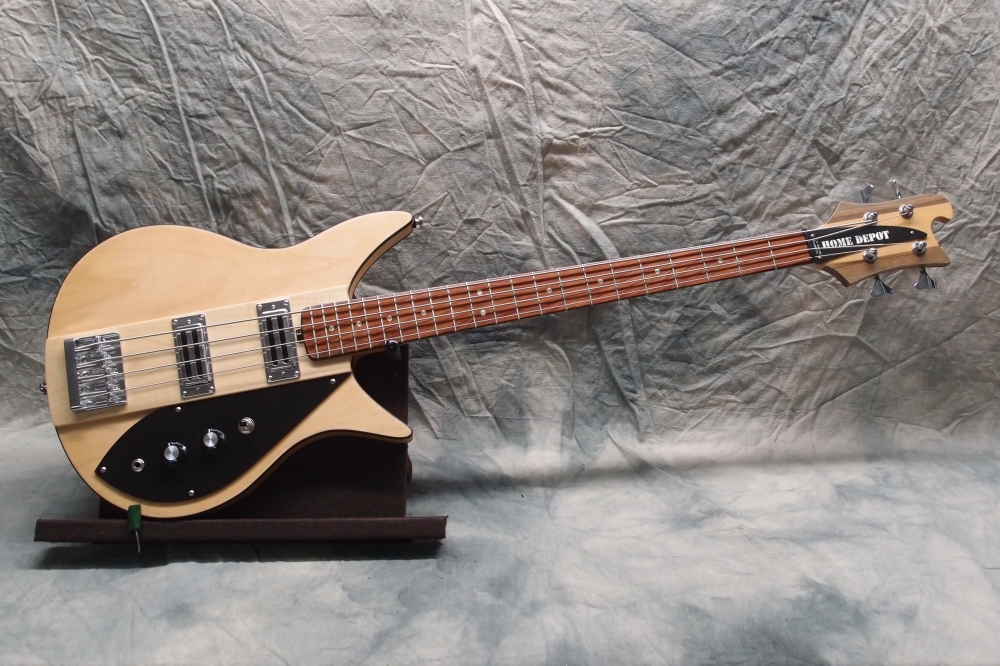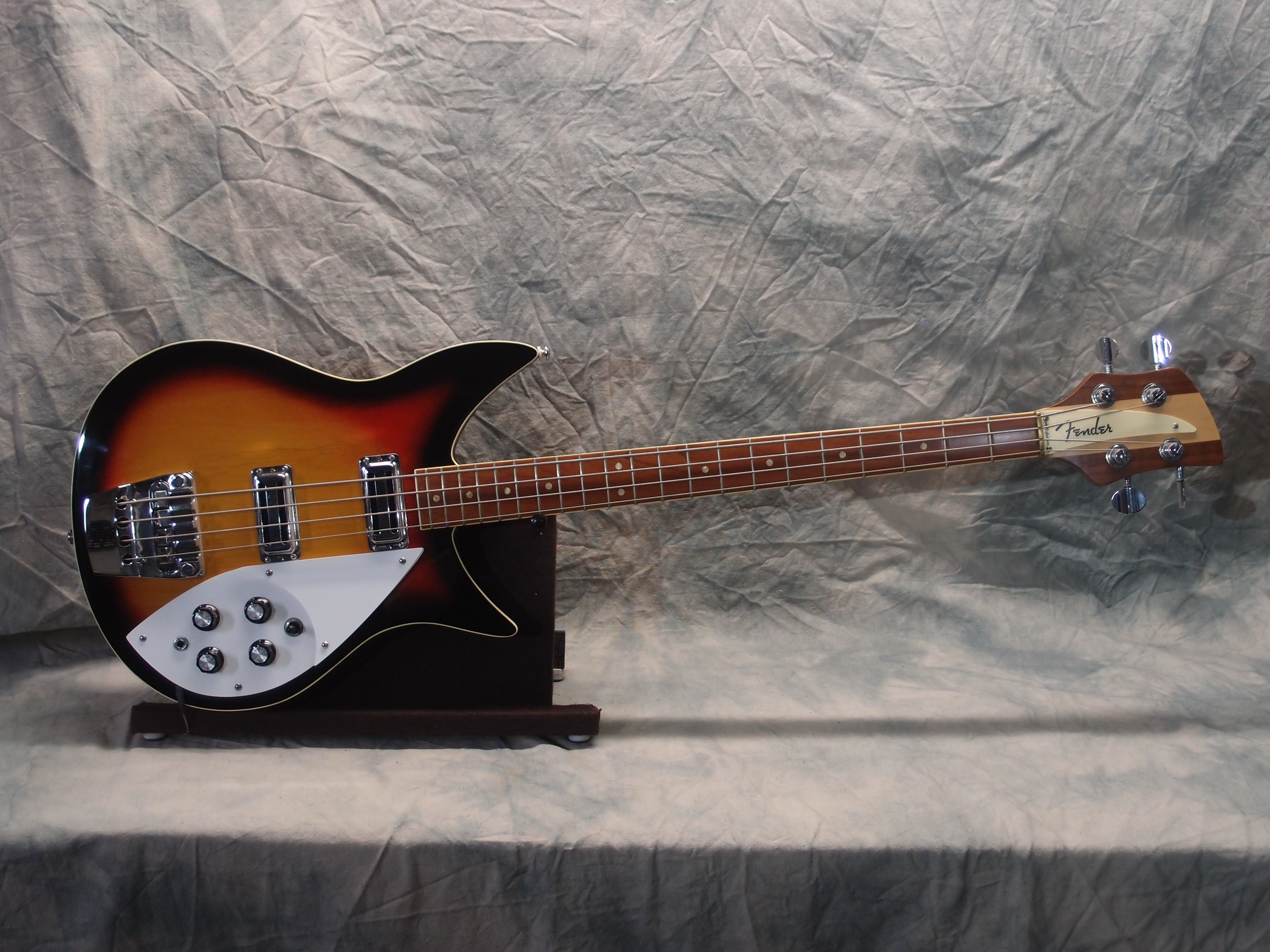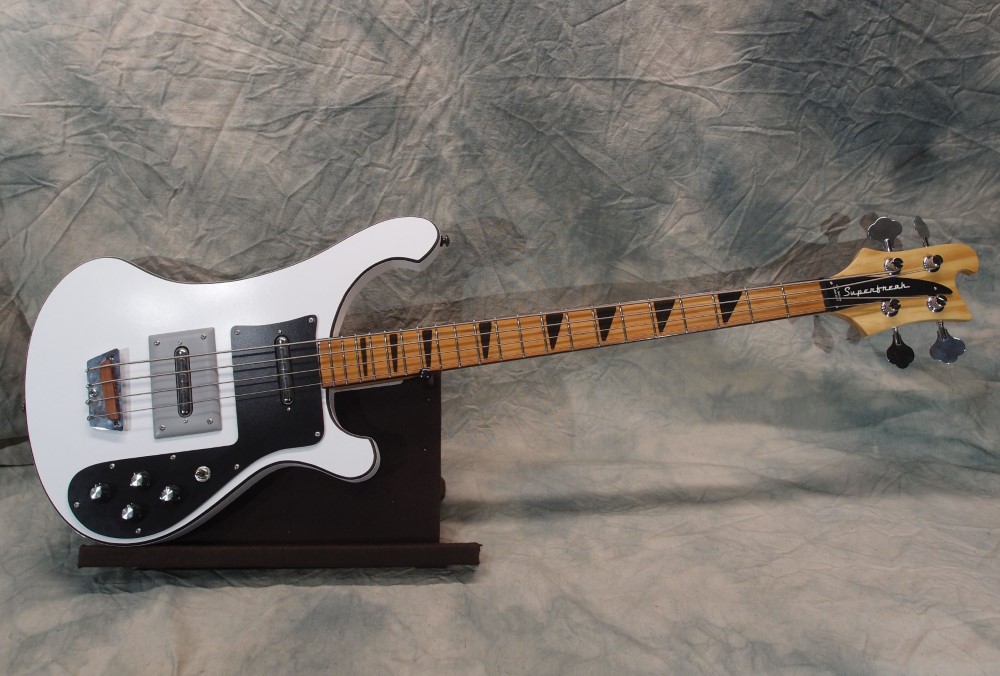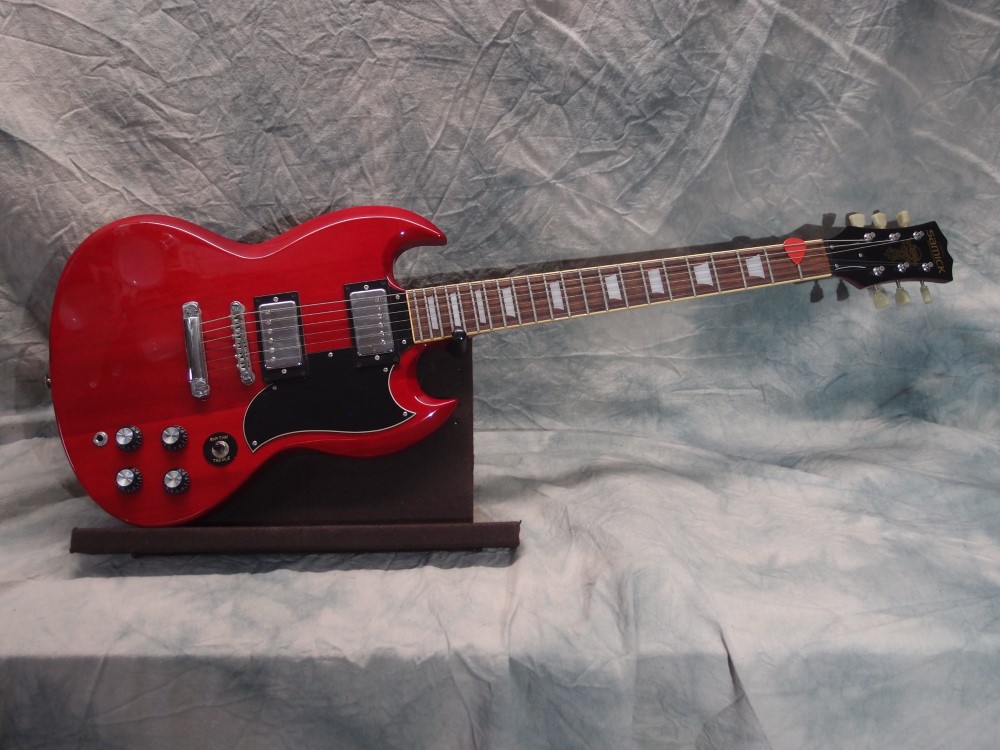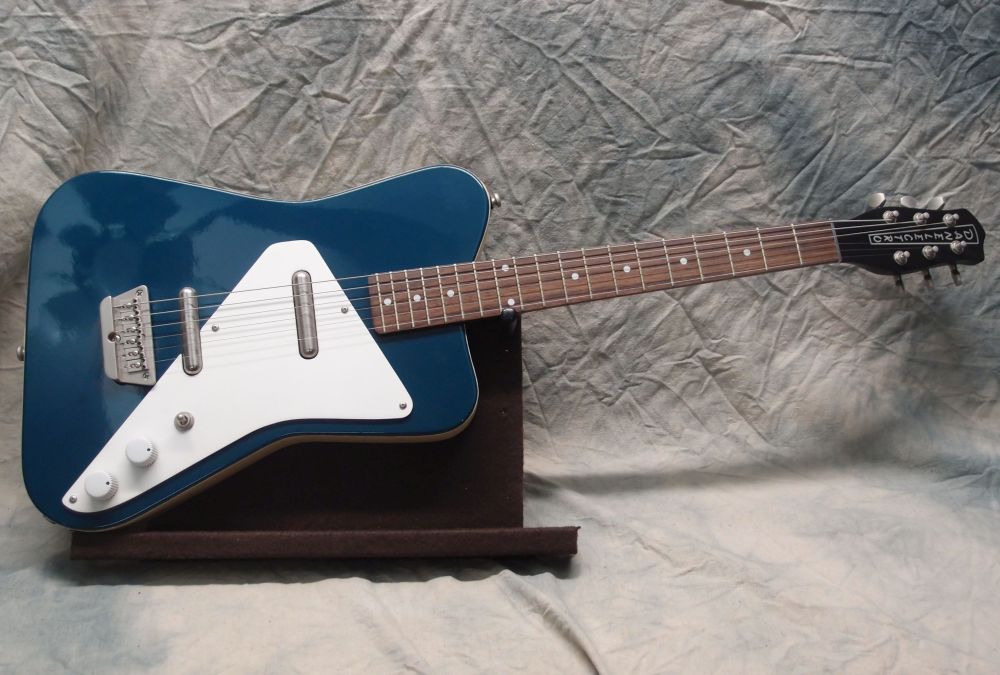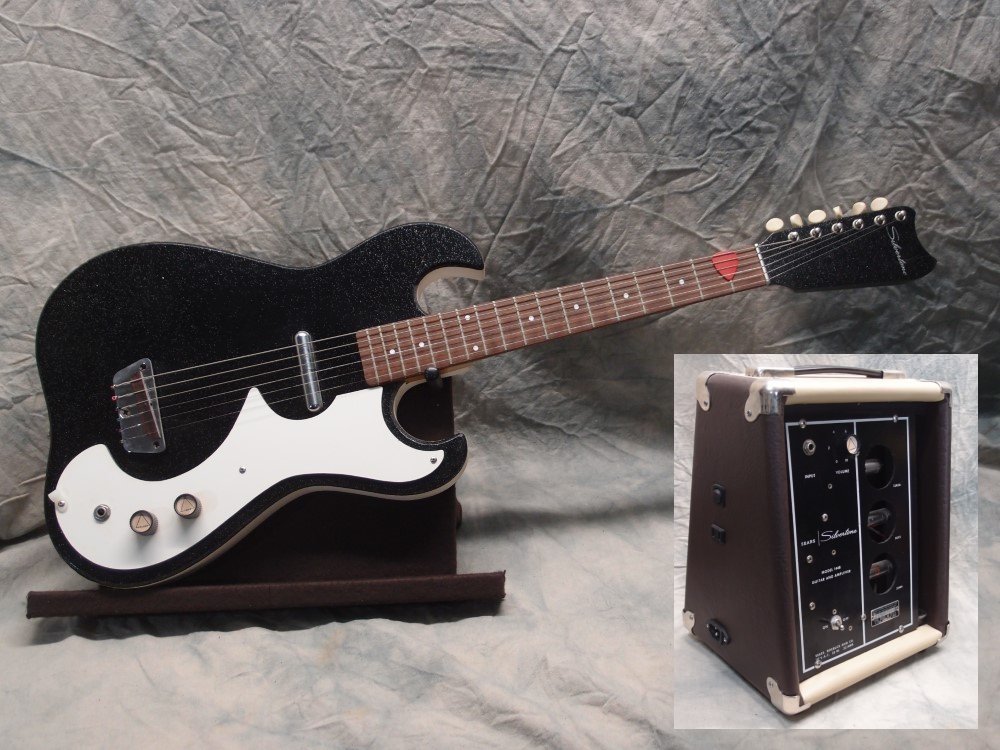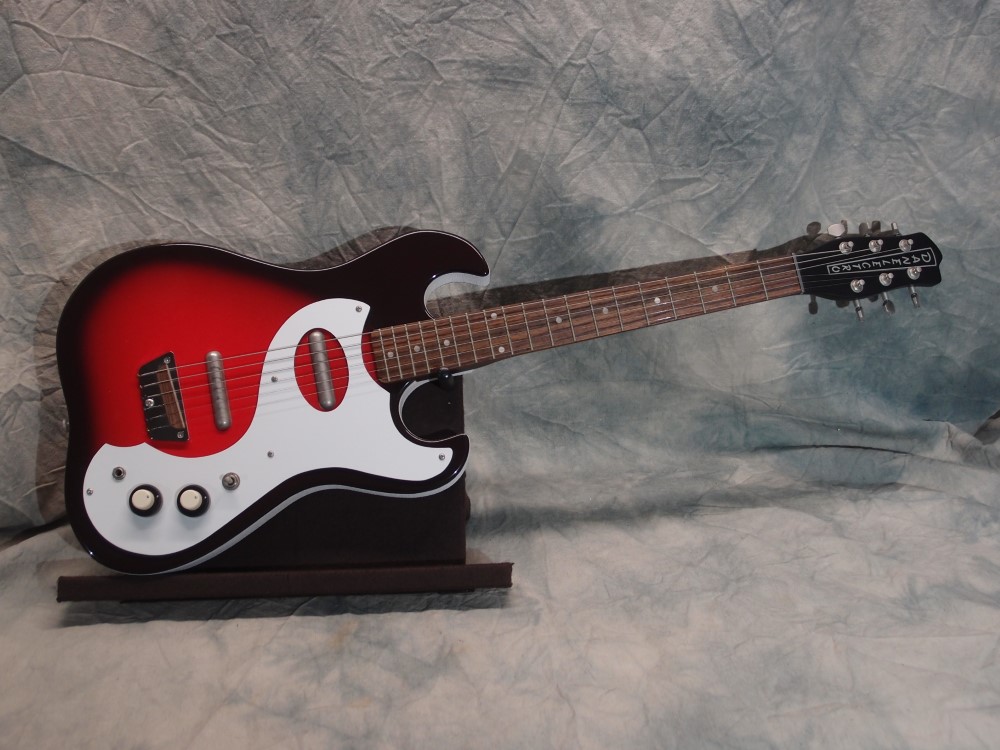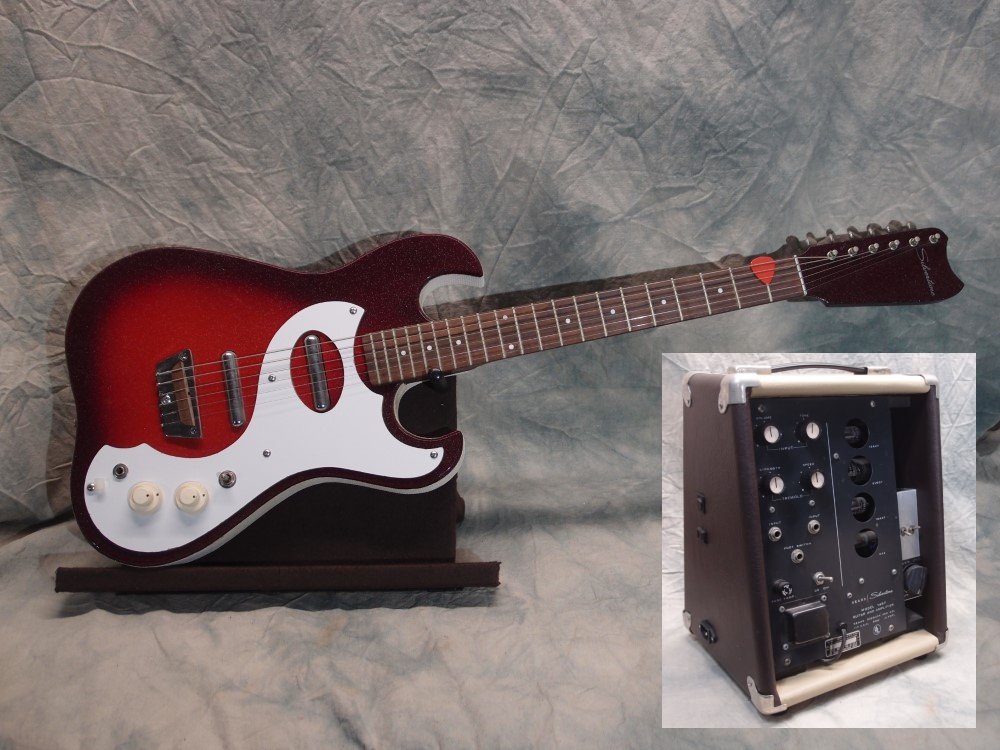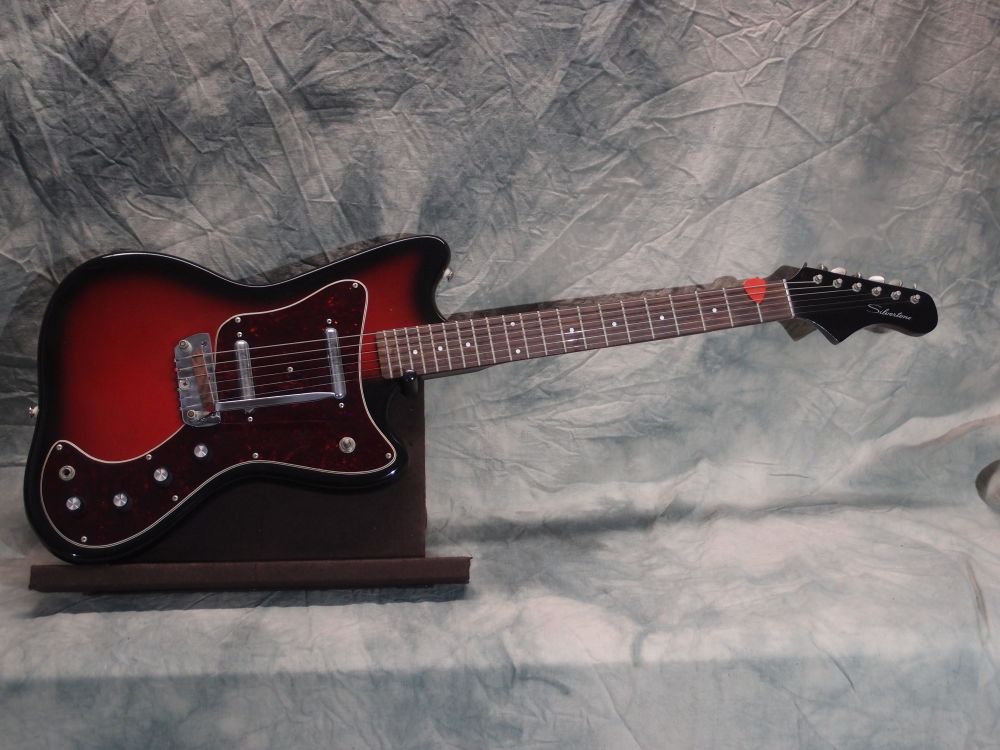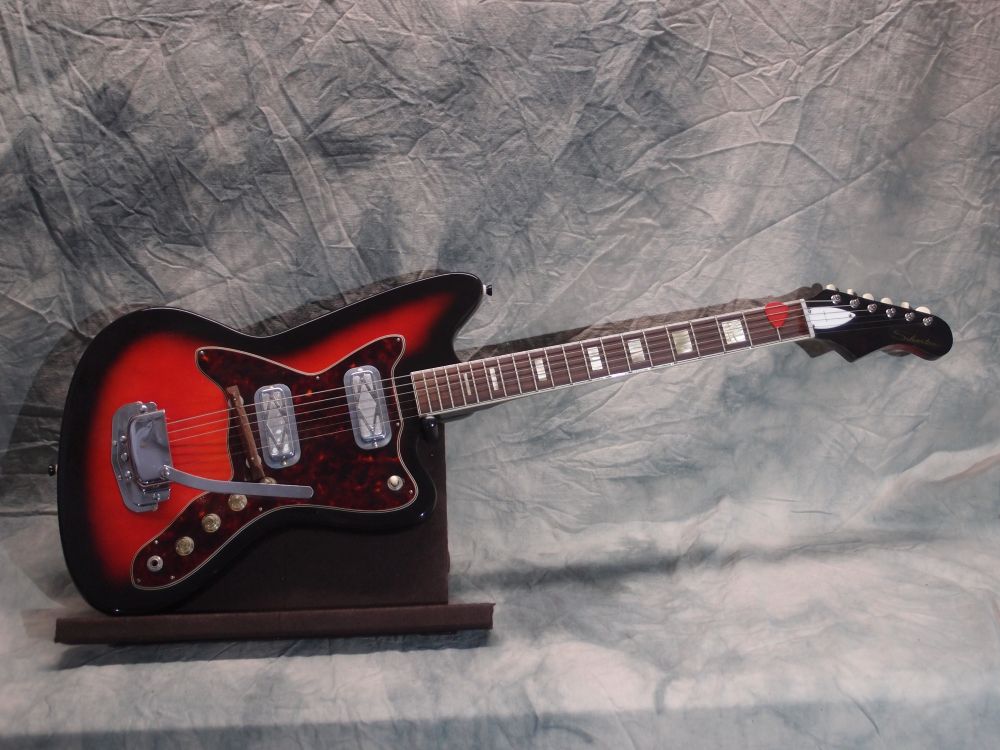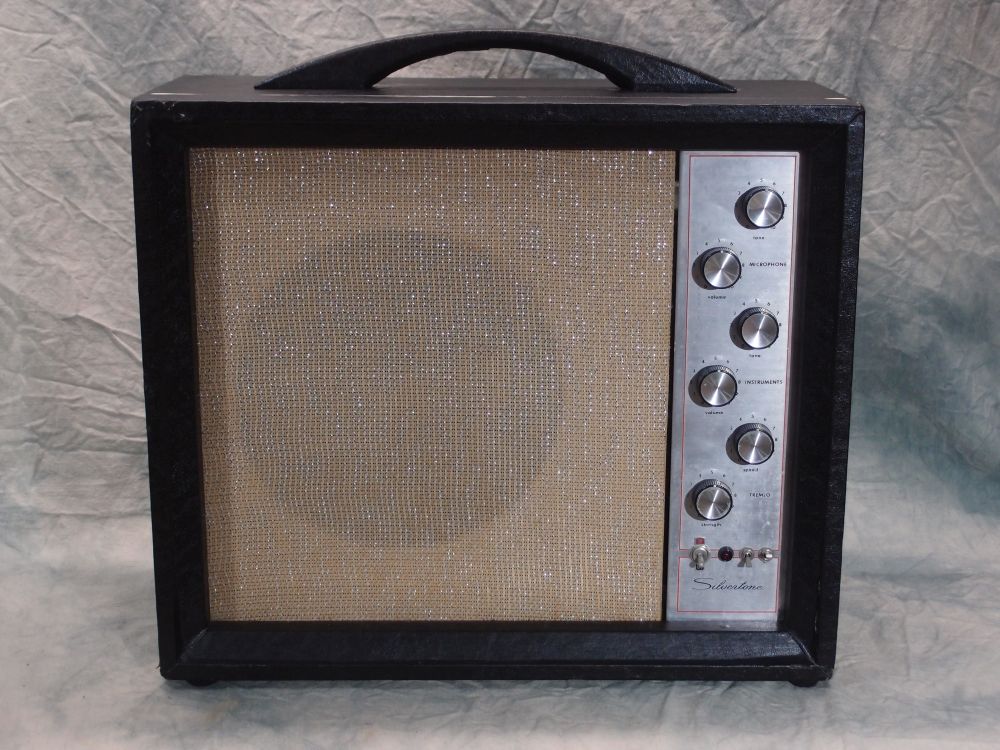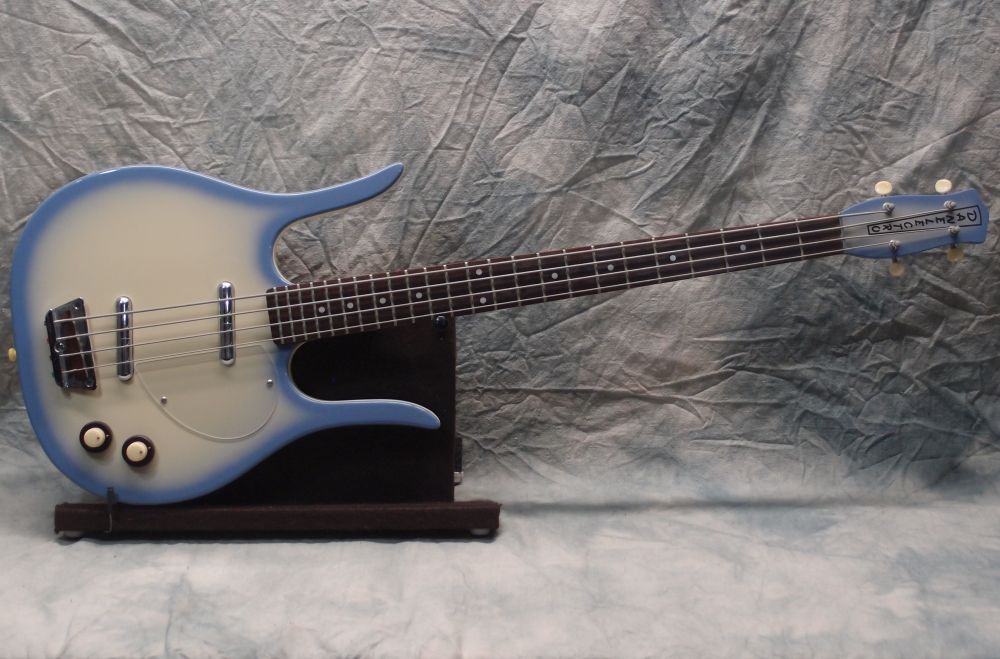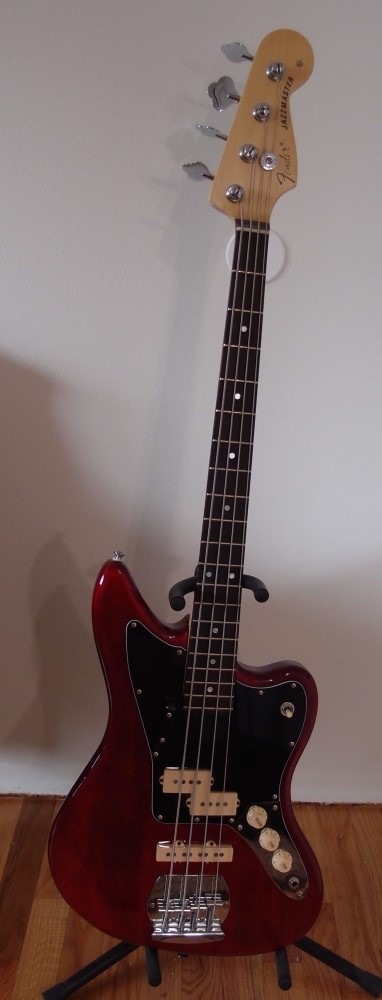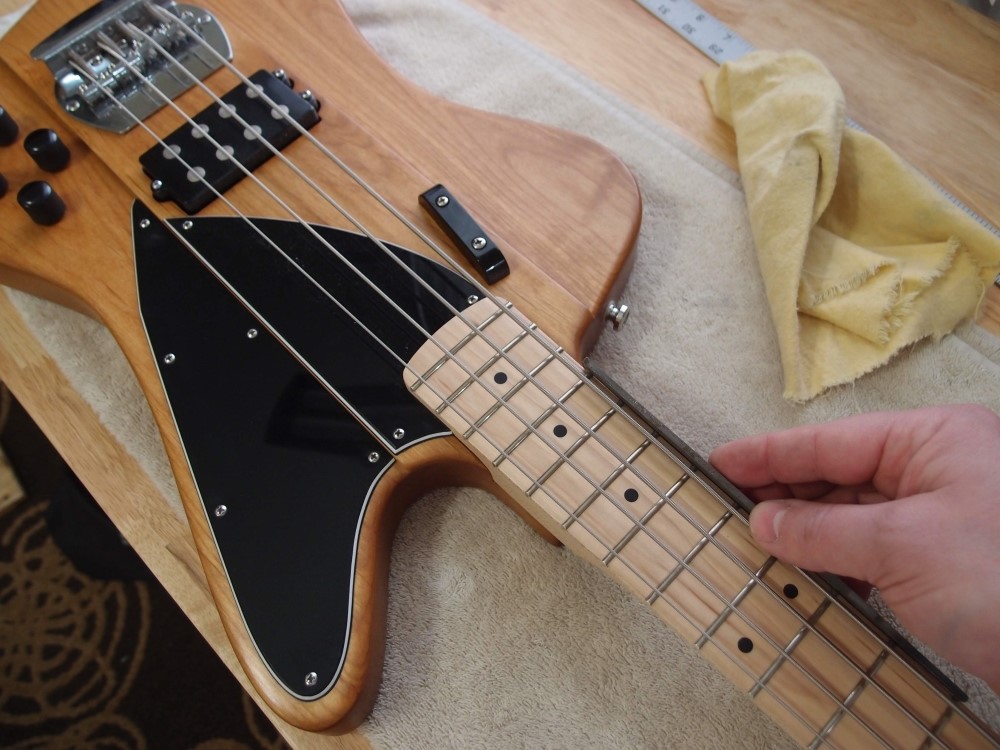Fender Projects




As everyone should know, the Stratocaster guitar is actually the guitar version of the Precision Bass, which came first. The big innovation on both was the extended upper horn, a necessity on a long-necked bass for balance and to bring the low frets within reach when the instrument is hanging on a strap. Not strictly needed on a guitar, but looks great, and back in the 1950s nothing had ever been seen like it. It was an instant hit.

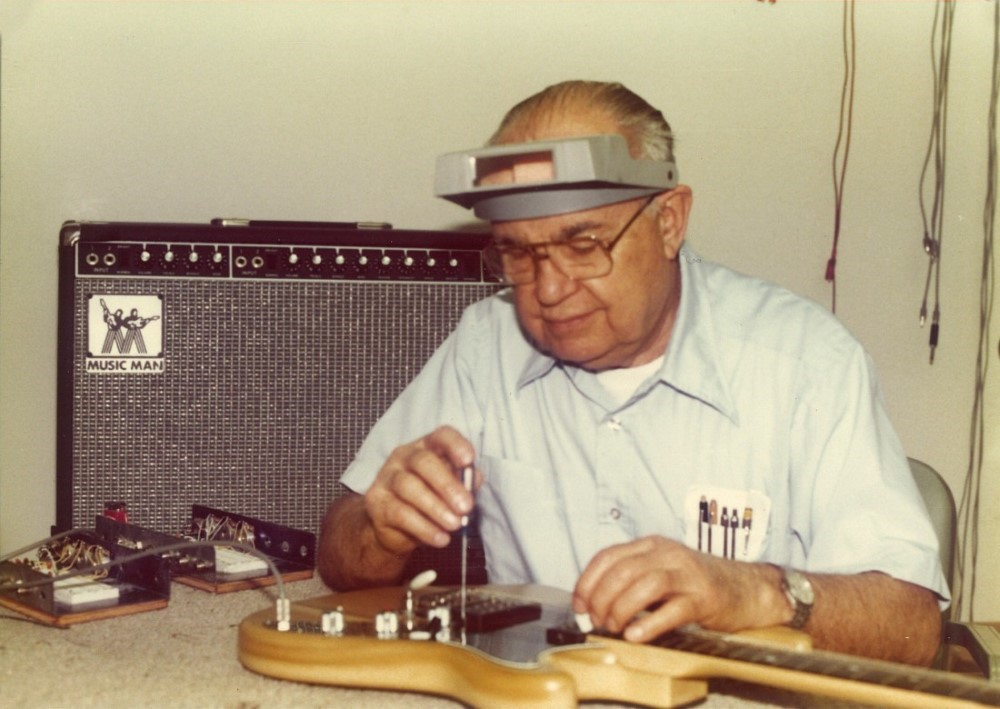
In fact. Leo Fender's Stratocaster is probably the most aesthetically perfect electric guitar ever produced, as evidenced by the number of them that reside in art museums, and the millions of them that have been sold. While Fender has come out with bass versions of just about every guitar model, they never made a Strat bass, and likely never will. They're just not going to mess with it, and I can completely understand that.
So if you want one, you're going to have to fire up your woodworking skills and do it yourself. Here are three to start with:
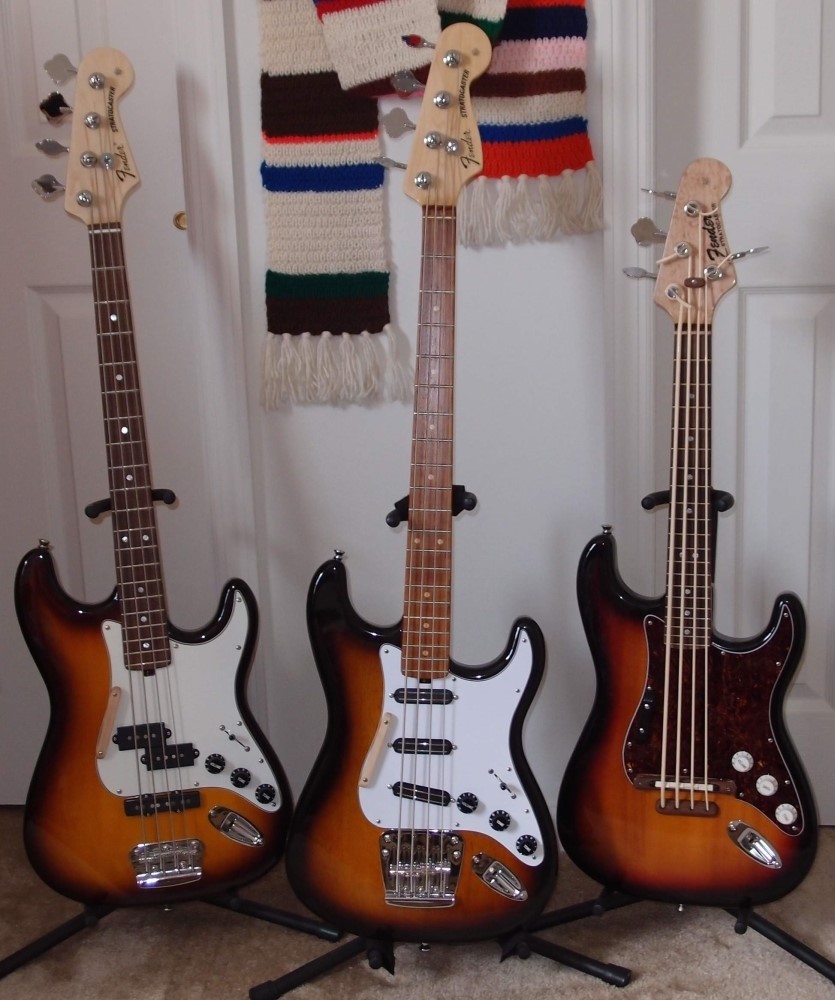
It takes a bit of creativity to convert a guitar body. As you can see, here are 3 different solutions to what to do with the tremolo route. All are Squier bodies with handmade necks.
On the left is 30" scale, with P/J pickups from GFS and active electronics - bass & treble. 4-way switch with series & parallel options. Through-body Musicmaster bridge.
The middle one is 30" scale with passive electronics. Conventional tone control, plus a crazy mode switch that selects series, parallel, or single-coil mode for all 3 pickups at once. 5-way switch, plus a pull on the tone knob to engage the bridge pickup separately. Through-body Mustang bridge. All 3 pickups totaled under $20 and sound great.
On the right is a 21.5" scale "Uke" bass. Rubberband strings like an Ashbory, piezo (Washburn?) saddle and active electronics the same as the other one. The bridge and tailpiece are walnut, the nut is maple. The neck is aligned to the center of the tremolo hole, which holds the tailpiece.
The necks are all 3/4" maple from Home Depot. The birds-eye on the uke is really nice, you just have to poke through the wood pile to find the nice pieces. The Uke has a simple steel tube for a truss rod. The other two have spoke nut double-acting truss rods, the only ones in the world. The dark fretboards are cut down from Stewmac bass & guitar models, while the middle one is completely handmade from some kind of hardwood, I forget, looks like bubinga, but I don't think it is. The dots are maple plugs.
Which one is my favorite? So far, the first one. The Uke is neat, but very much a niche thing. But the middle one is far from set up yet, so things could change. Strat Bass VI in planning stages. Oh, and a Tele has been in the works since before Squier released theirs, darn them.
A "Family Portrait" of the Strat basses I have assembled ( so far )
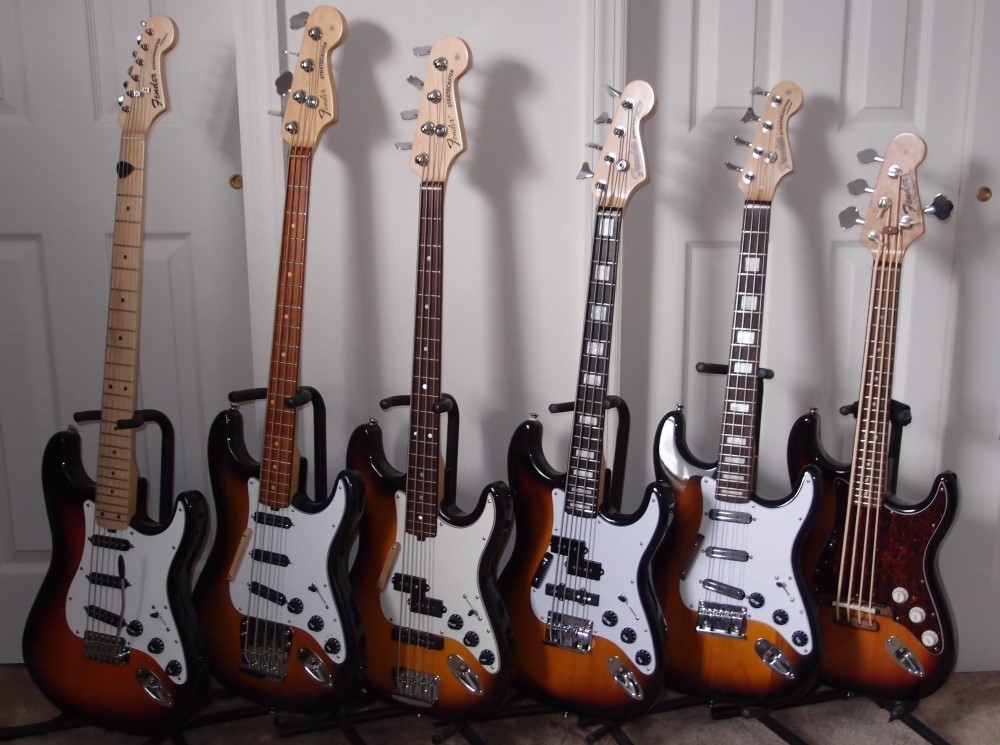
From left to right:
- 30" Bass VI ( EADGBE bass tuning )
- 30" 3-pickup bass
- 30" 2-pickup bass - the first, and still my favorite
- 25" 2-pickup bass ( EADG bass tuning )
- 25" piccolo bass ( EADG guitar tuning )
- 21" ukelele bass ( EADG bass tuning )
All are made with what are probably Squier bodies. The 25" necks are modified guitar necks, while the rest are completely custom hand-made, right down to the truss rods. #3 has fully active electronics, 5 & 6 have semi-active electronics, the rest are passive. In order of construction, they are 3-6-2-1-5-4.
That is six completely different Stratocaster basses. Fender has never released anything like any of these, so the fake logos should not fool anybody, and most of them I actually signed as well. I am in no way trying to perpetrate a fraud, I just like the way it looks. It's like the way a Mustang needs that chrome horse on the grille. They are not for sale.
The only disappointment is that the tremolo on the Bass VI functions very poorly. The Strat tremolo is simply overstressed with six bass strings.
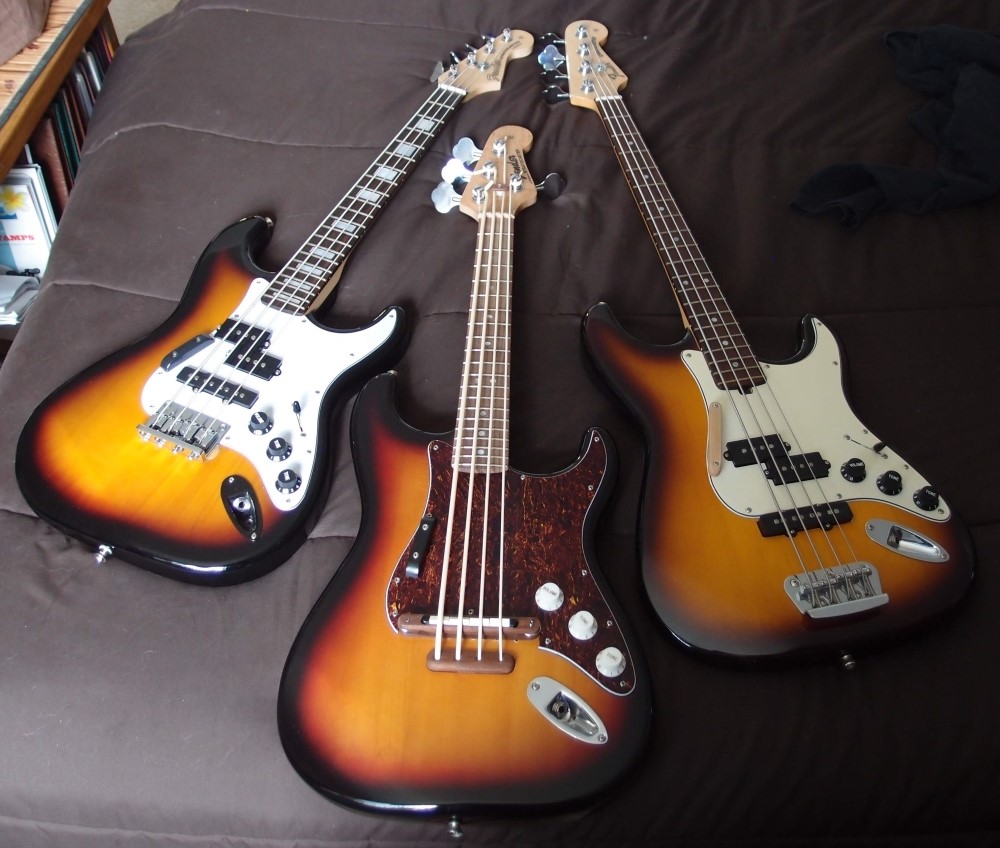
The necks all use standard guitar heels. Only one of the neck pockets is modified. I made two other basses, a 30" fretless and a 30" tremolo, and a 12-string guitar. And a 30" Telecaster. The trick with a Strat conversion is - What do you do with the tremolo hole? Once you figure that out, the Strat makes a great bass.
A 24-fret 30" bass neck is a drop-in replacement for a guitar neck. I initially realized that from studying Danelectros, but it is actually pretty obvious. Take a 21-fret guitar scale, and add frets at the long end. In order, the new scales will be 27", 28.5", and 30.3" if you start with 25.5". The bridge never moves. With the right strings, you can tune any of these E-E as a bass or B-B as a baritone.
Anything under 32" I build with a guitar heel; 32" can go either way. A standard bass bridge will not work with a guitar neck, you need a narrower one. Look closely at the picture. A two-saddle Bronco bridge works perfectly. This width is pretty much the industry standard for short-scales, and also Rickenbackers.
The 25.5" basses are essentially a 5-string capo'ed at the 5th fret, minus one string, which gets you back to EADG with shorter heavier strings. I learned how to unwind strings.
A conversion neck is related. Using a regular wide bass heel, chop off the first fret and add a replacement at the other end. Let the replacement overhang the heel like a guitar, and you have a 32" bass neck that is a drop-in replacement for a 34" neck, without moving the bridge. A 30" conversion neck would require two overhanging frets, or lose one. I've never tried it.
Hanging a giant bass neck on a guitar body doesn't appeal to me. Likewise for hanging a dinky neck on a massive bass body. I like a strike a balance, literally, and also aesthetically. ( Although a 24-fret 30" scale is as long as a standard bass neck. )
It's all a matter of where you drill the dot markers. If you got a totally unmarked fretless neck, you could make it into anything you want.
I imagine these are mostly Squier bodies. There are lots of nice bodies out there. Using factory bodies like this is a huge labor-saver. If you can make your own necks, you can build all sorts of interesting things.
The guitar necks here ( block inlays ) are paddle-heads from Eden, cut and drilled for four strings. Those are two very unique instruments that required almost no woodworking at all.
By the same token, I will never build a 34" bass neck. I've done a pile of 30 inchers, and I'm on a 32 inch kick right now.
Alas, now I really can't think of any more ways to bastardize a Strat body, at least not worthwhile ones.
The bottom line on these Strat basses is that the Strat makes an excellent bass. From the 'Stratbory' to the fretless, I have not been disappointed with any of them - they all sound great, and are a blast to play. The Stratocaster seems to be a sacred relic to Fender and they refuse to alter it in any way, and that's a real shame. Any one of my Strat basses would probably sell itself at Guitar Center.

